9 Search Optimization Tips for SaaS & Tech Companies
By their very nature, software and technology companies are embedded in the online economy. Whether it’s a business-to-business software as a service (SaaS) company or a consumer-facing application, the truth is that a great deal of a software company’s success will be determined by one simple factor:
Can people find you online?
81% of B2B purchase cycles start with an online web search and 57% of B2B marketers say Search Engine Optimization (SEO) has the biggest impact on lead generation. The bottom line for software companies is that, if customers and sales prospects can’t find you online, you simply won’t be a part of the evaluation process or buying cycle.
And it’s no secret to marketers across all industries, software and technology included. According to HubSpot, roughly 60% of marketers say improving SEO and growing their organic presence is their top inbound marketing priority.
The problem is, many software companies and organizations simply don’t know where to start in terms of optimizing their SEO, and therefore fail to develop a concrete gameplan that will yield real results.
This is precisely why we’ve developed this comprehensive guide for software and technology companies to give a huge boost to their Search Optimization. From landing pages and API documentation to vertical industry reports and guest blogging, read on to discover our top nine SEO tips that software companies can put into use right away.
Chapter 1: SaaS SEO Landing Pages
Use Targeted Key Phrases for SaaS SEO Landing Pages
Landing pages play a pivotal role in the lead generation and SEO strategies of software companies operating in the SaaS industry. As standalone web pages crafted explicitly for marketing and advertising campaigns, they wield significant power in driving targeted traffic and maximizing conversion rates.
When a user clicks on a Google AdWords or other SEO campaign, the landing page becomes the virtual doorstep where they first arrive. It serves as the initial touchpoint, offering a tailored experience that aligns with the keywords and intent that led them there. Therefore, the importance of keyword-targeted landing pages cannot be overstated, as they ensure that visitors find themselves on pages that directly cater to their searched products or services.
Consider the diverse range of services offered by software companies. They often cater to various industries, business sizes, or specific requirements. Each customer segment conducts targeted searches on search engines like Google to find the precise solutions they need. For instance, a hospital administrator might search for “Healthcare CRM” to streamline patient management and enhance operational efficiency. On the other hand, a mom-and-pop shop owner may search for “CRM for Small Business” to strengthen customer relationships and optimize sales processes.
By incorporating keyword-focused landing pages into their SEO strategies, software companies can bolster both their overall search engine visibility and lead generation efforts. These pages serve as optimized gateways to the products or services that match the searched keywords, offering users a seamless journey from search queries to relevant content. Consequently, such targeted landing pages not only enhance organic rankings and attract qualified leads, but also facilitate higher conversion rates by delivering precisely what visitors are seeking.
When building landing pages, it is crucial to embed key phrases strategically throughout the content, including headlines, subheadings, body text and calls to action. This helps search engines understand the relevance of the page to specific keywords and improves the chances of higher rankings. Moreover, by aligning landing page content with user intent and presenting compelling value propositions, software companies can engage visitors and encourage them to take desired actions, such as signing up for a trial, requesting a demo, or making a purchase.
Why SEO landing Pages Work So Well For SaaS
“Software for accounting” and “small business CRM software” are examples of real-world search terms. You will drive significantly more conversion on a page that talks to the prospect’s needs. Create compelling content with the help of advanced AI writing tools that attract your target audience. The more narrow the topic, the more focused your CTAs can be to entice people to act.
SEO Landing Page For Services Related To Your Software
Hubspot is a software company that provides a variety of different products or services, depending on the needs of a certain business. While customer relationship management (CRM) and marketing automation are the core of their business, Hubspot also offers a variety of other services, as well as sub-services within their core offerings.
This is a great example of how Hubspot has used a key phrase targeted landing page (geared towards those looking for graphic design services), to improve SEO and lead generation.
First, note that the heading of the page is phrased almost exactly as someone would type into a search bar. A small business owner might also be searching for terms like creating graphics that convert,” or “graphic design for lead generation,” etc.
This leads potential customers to their site that may not be looking for their software solution now, but will gain knowledge, brand equity, and potentially convert into a lead for future nurturing.
SEO Landing Page For Services Related To Your Software
Hubspot is a software company that provides a variety of different products or services, depending on the needs of a certain business. While customer relationship management (CRM) and marketing automation are the core of their business, Hubspot also offers a variety of other services, as well as sub-services within their core offerings.
This is a great example of how Hubspot has used a key phrase targeted landing page (geared towards those looking for graphic design services), to improve SEO and lead generation.
First, note that the heading of the page is phrased almost exactly as someone would type into a search bar. A small business owner might also be searching for terms like creating graphics that convert,” or “graphic design for lead generation,” etc.
This leads potential customers to their site that may not be looking for their software solution now, but will gain knowledge, brand equity, and potentially convert into a lead for future nurturing.
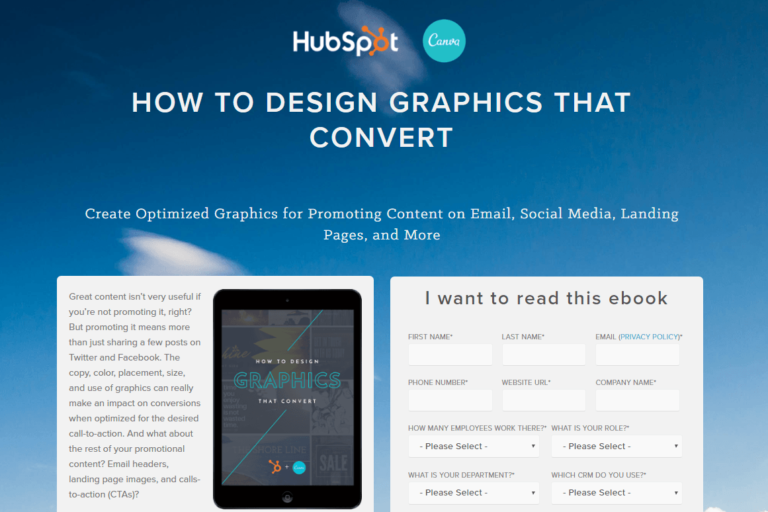
Market / Vertical SaaS SEO Landing Pages
Another common search is by market or vertical. If you are a company providing accounting software with a focus on construction, engineering, surveying, and other related vertical industries then you should have landing pages for each. These are considered pillar pages. A pillar page is a foundational piece of content created to serve as a comprehensive resource on a specific topic or theme for SEO purposes. It aims to provide a comprehensive overview and in-depth coverage of a particular subject, acting as a central hub that links to and organizes related subtopics. You may have several sub-verticals such as commercial construction or residential construction that you can branch off from those initial main pages.
Targeted landing pages such as these are great because someone searching their market plus a solution is a very targeted buyer that you can specifically speak to in your messaging to address their needs and concerns. Socialive is a great example of utilizing targeted landing pages to drive conversion. They have specific pages for certain areas of an organization and how their platform can help a variety of different teams.
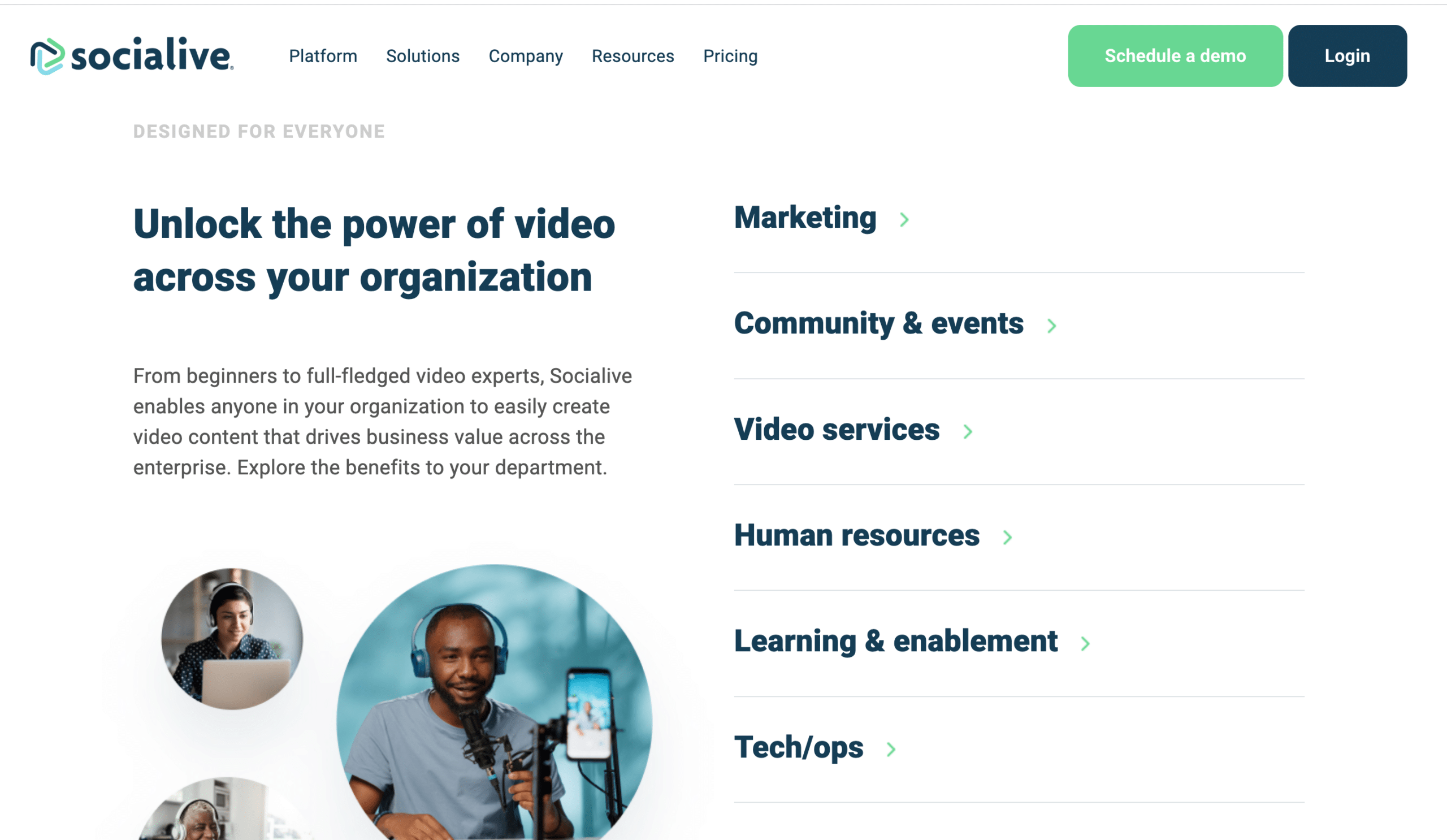
Specific Software / SaaS Feature
If you’re like most software and technology companies, the product, service, or platform you offer encompasses a variety of different features and functionality. And depending on the nature of your customer base and segments, specific features will be of more (or less) interest to certain audiences depending on their business needs.
The question is, how do you take this important relationship into account when designing landing pages to optimize for SEO.
The answer is, software companies should consider using feature-specific landing pages that will tie in with AdWords or similar campaigns (as above) but will direct prospects to a landing page with the most relevant product features based on their search queries.
SalesForce, for instance, is another software company whose platform offers a plethora of features and functionality. Sales prospects might be searching for CRM features like customer service integration or marketing automation.
What SalesForce does effectively, and what any other software companies should consider, is creating separate feature landing pages that will both optimize SEO and increase lead capturing.
As you can see below, Salesforce creates highly focused landing pages that hone in on the specific product that they offer.
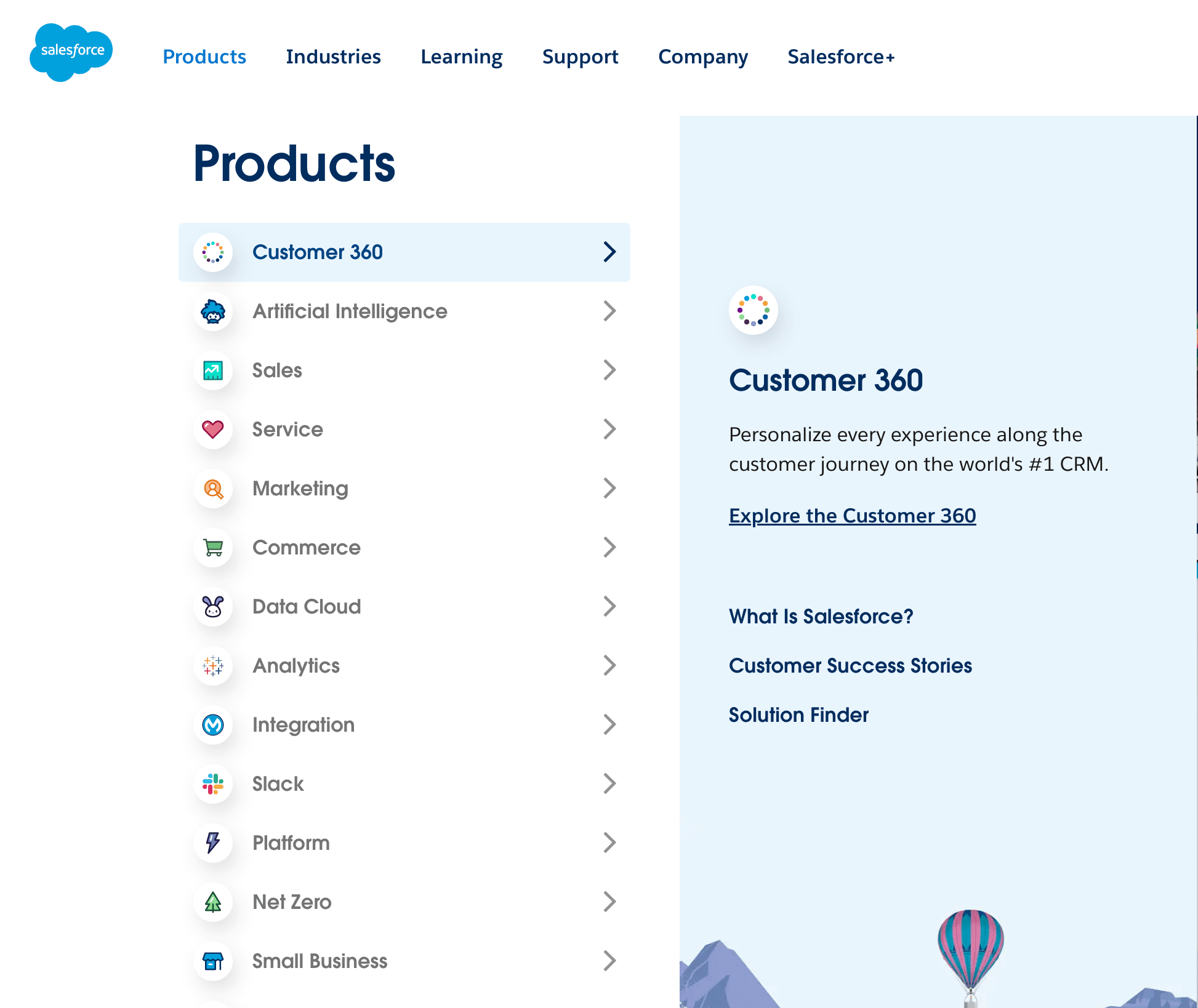
It is crucial to collaborate with SEO and digital marketing partners to determine the most appropriate calls-to-action for each feature landing page. A/B testing different versions can help identify the highest-converting options.
By creating feature-specific landing pages tailored to the interests and search queries of potential customers, software companies can optimize SEO, increase lead generation, and provide a more personalized user experience. Continuous testing and optimization are essential to ensure the effectiveness and conversion rates of these landing pages.
Business Stage SEO
In the SaaS industry, the effectiveness and implications of a solution can vary based on the size or stage of a company. As a result, companies recognize the significance of catering to different business stages through their SaaS SEO strategies.
One essential aspect of business-stage SEO is the creation of landing pages specifically tailored to address the unique needs of start-ups, small businesses, and enterprise-level organizations.
Start-ups often require agile and scalable solutions that can accommodate rapid growth and changing business requirements. Therefore, creating landing pages that highlight how a SaaS product or service supports the specific challenges faced by start-ups can be highly effective. These landing pages can focus on features like flexible pricing, rapid implementation, integration capabilities, and scalability.
On the other hand, enterprise-level organizations require robust and comprehensive solutions that can handle complex operations, integrate with existing systems, and provide enterprise-grade security and support. Landing pages designed for enterprise customers can emphasize features such as advanced customization options, robust data analytics, multi-user collaboration, and dedicated account management.
Small businesses represent another significant segment that requires tailored SEO landing pages. These pages can highlight the cost-effectiveness, ease of use, and simplicity of implementation that small business owners often prioritize. Small business landing pages can address common pain points, such as limited budgets, time constraints, and the need for streamlined workflows.
By crafting landing pages specific to each business stage, SaaS companies can effectively communicate the value proposition of their solutions and address the unique pain points and priorities of different customer segments. It’s essential to consider what your targeted audiences’ search intents are. This targeted approach helps to attract qualified leads, improve conversion rates, and ultimately drive business growth.
Referring back to Salesforce, they create strong customer-segmented landing pages that cater to particular industries. For example, check out their Salesforce for Education page:
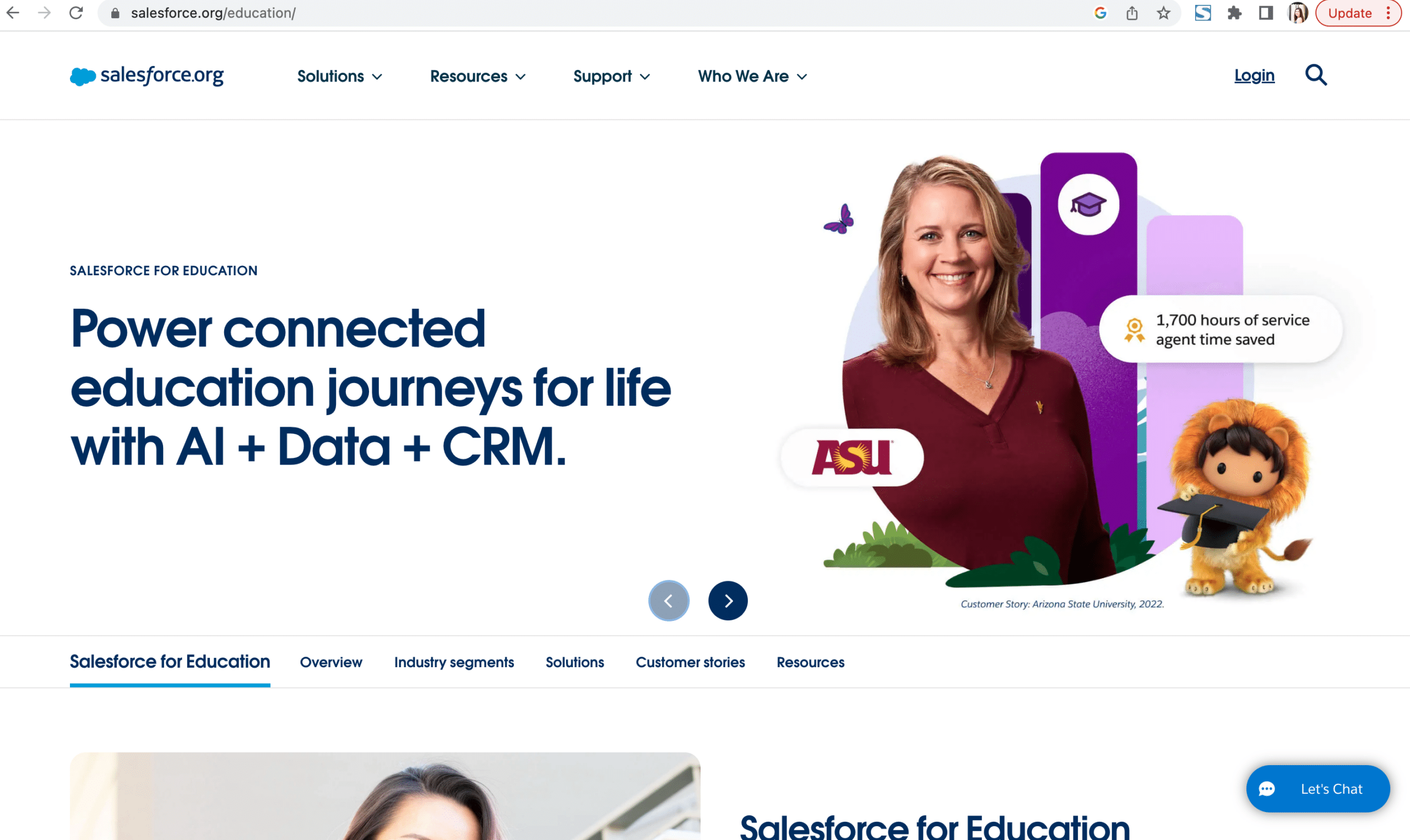
Research to Create SaaS SEO Landing Pages
Before moving forward with key phrase-targeted landing pages, you’ll want to work with your digital marketing partner or utilize tools like Moz or Google Keyword Planner to decide which key phrases will be best for each customer segment (and hence each landing page). Once you conduct that research, you can establish a list of keywords that you need to target the most. You’ll then be able to effectively run campaigns on Google AdWords to promote the pages you want and drive traffic specifically to those landing pages.
When designing a new website for a technology or software company, the strategy, technology, structure, and design of landing pages must be a primary – if not the primary – part of the process.
In many ways, landing pages are more important than your homepage or core website pages because smart marketing strategies will drive more traffic to your landing pages than anywhere else. A sign of a successful marketing program is high volumes of visits and conversions on landing pages used in advertising and search optimization.
“Whether you choose targeted landing pages solely or to add targeted landing pages to campaign source tracking, your conversion rate will improve as you test design, content, and structure. The lessons you learn from one campaign will serve you well in subsequent campaigns, even campaigns for different offers.”
New Feature Announcement Articles & Videos for SEO
Software and technology firms are constantly developing, refining, and releasing new product features and functions. Technology companies should use this to their advantage and develop content on a consistent basis that will serve to improve and optimize their SEO.
Articles and blog posts, for example, can be written in support of new feature introductions. These articles combined with videos are the fundamental pieces of using new feature announcements for search ranking improvement.
These articles and videos will serve as a resource of record for these new features and will become content that is discoverable by search engines well beyond the actual announcement. Feature announcement articles and posts typically take one of the two following forms:
SaaS Product Release Notes
With mature software products, an article offering product release notes is a classic tool for introducing new features. Also known as feature rollups or roundups, product release notes offer users all-inclusive accounts of new features and other product updates.
They’re lists that allow you to pass along a lot of information in an easily-scanned format. But be careful of using your internal jargon too heavily or turning the notes into rote checklists that are only presented from your point of view and don’t stress user benefits. You don’t want this content to lose your audience’s interest or make them more confused.
Often if you have a strong user base, these release notes will be linked to by users and professionals in their articles and blogs which builds backlinks – a major ranking indicator. WordPress is a great example of a company that consistently puts out release notes that get linked to thousands of articles about WordPress.
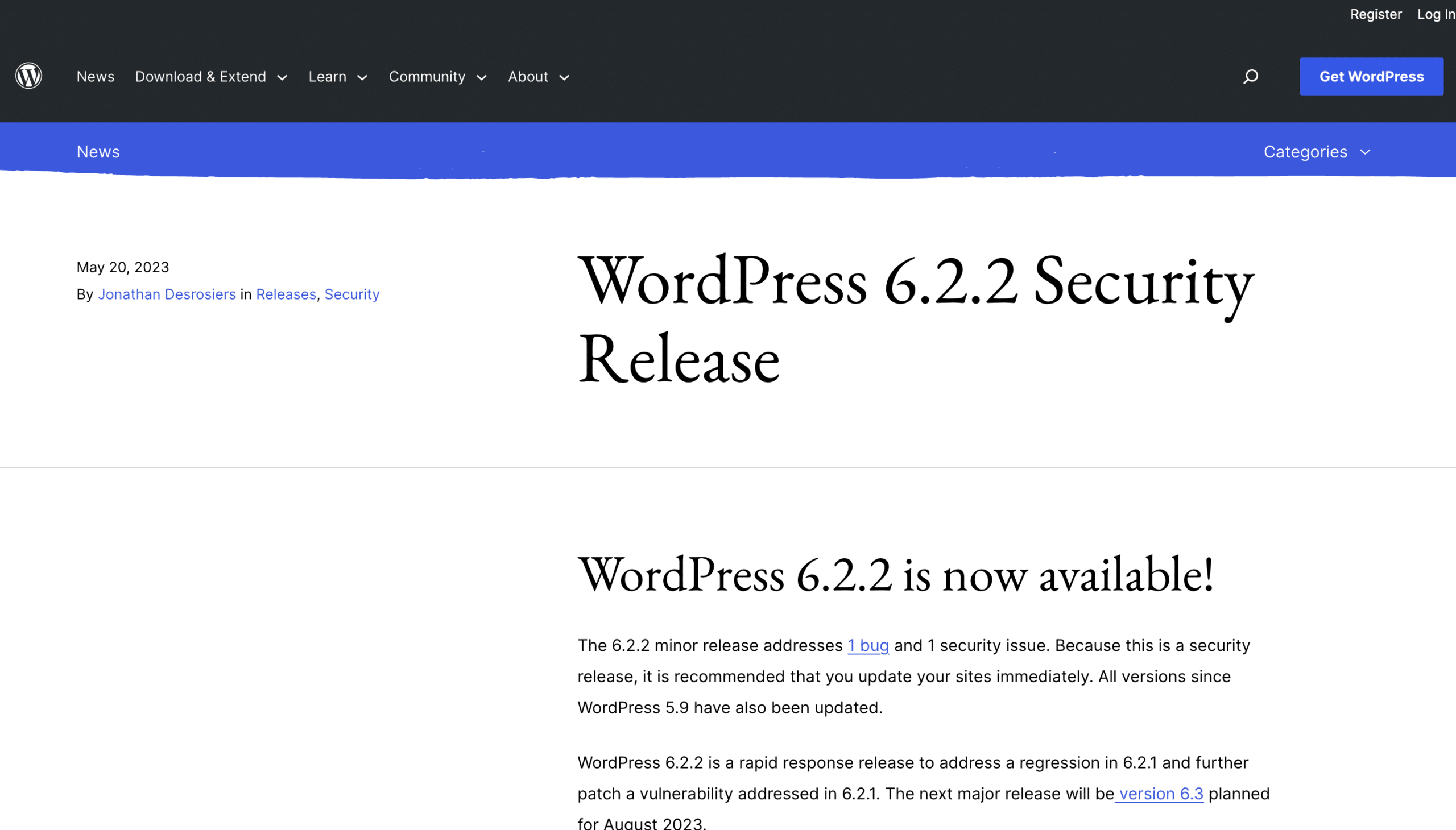
New Feature Announcements
These articles can drill down in greater detail about specifics, and push the brand-building “story” behind new features, with well-crafted copywriting.
A new feature announcement is a good way to use a new release as a branding opportunity, though you should always steer clear of hitting false notes or exaggerating. Like always, make sure the benefits to the user shine through. Again, simplicity and clarity are best when it comes to this type of content. Canva does a fantastic job keeping their customers in the loop on all the new and upcoming features they are constantly providing on their platform.
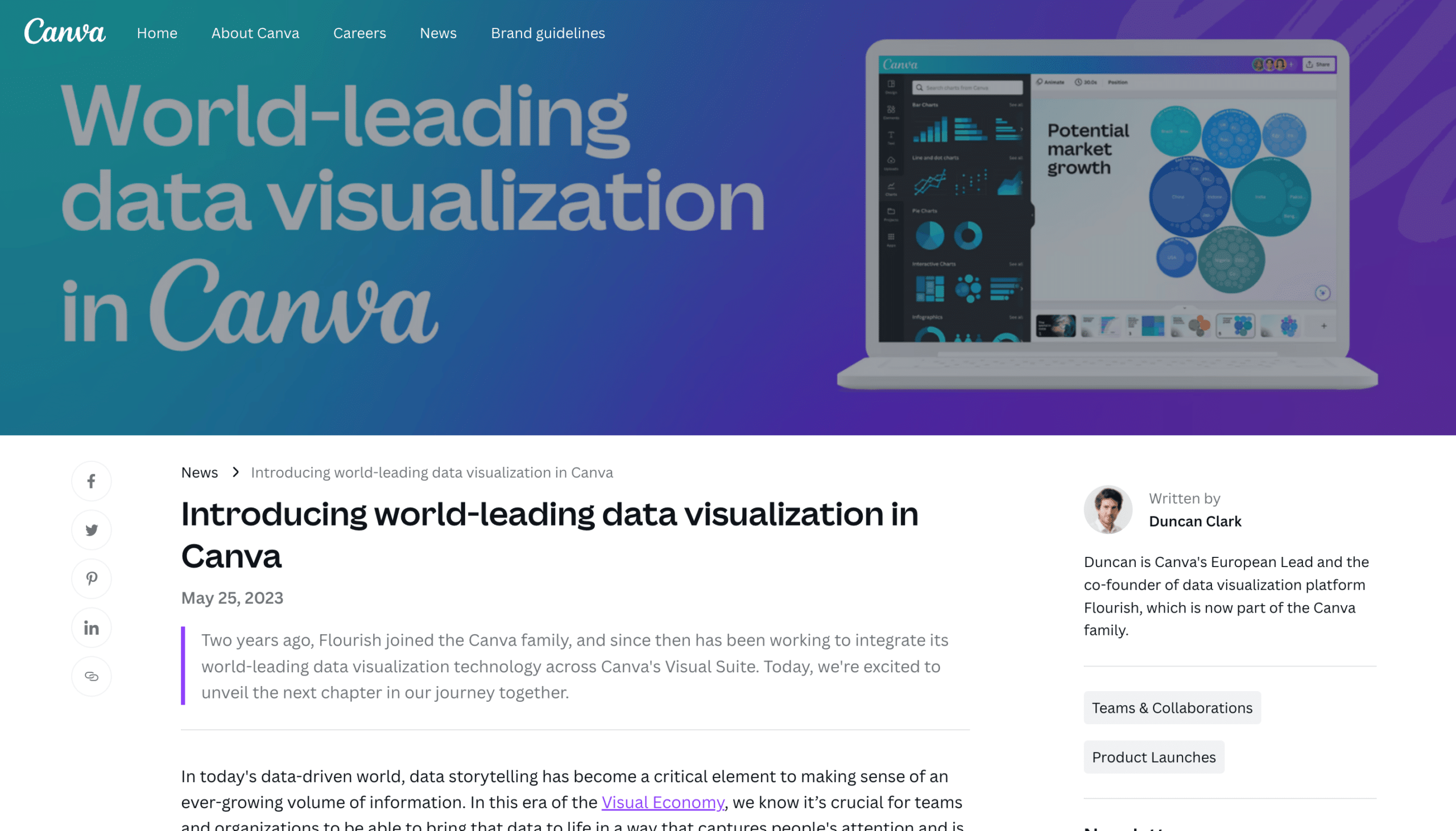
New Software Feature Videos
There are a wide range of ways to showcase new features being added to your software product. The great thing about leveraging video or animated gifs is that you can show rather than tell a user about a new feature.
This approach makes it significantly more comprehensible for a visitor to understand how the new feature works. Plus for potential buyers, this gives a great look under the hood which most potential software buyers want before they sign up for a demo.
The great benefit of SaaS SEO is that media can be published on other platforms such as YouTube which can drive an amazing amount of visibility.
Promoting Your Software Roadmap
A software roadmap is a perfect opportunity for improving search optimization for a software product. It acts as a summary of your feature updates and gives search engines a constantly updated resource for your product.
When done right, this is not only a page that provides smart cross-linking and summarization but also will attract backlinks as people discuss your product.
Both the articles and videos can be re-purposed and showcased on the company website, blog, and social media channels to optimize the number of backlinks you get from these new product announcements, therefore boosting your overall SEO rankings.
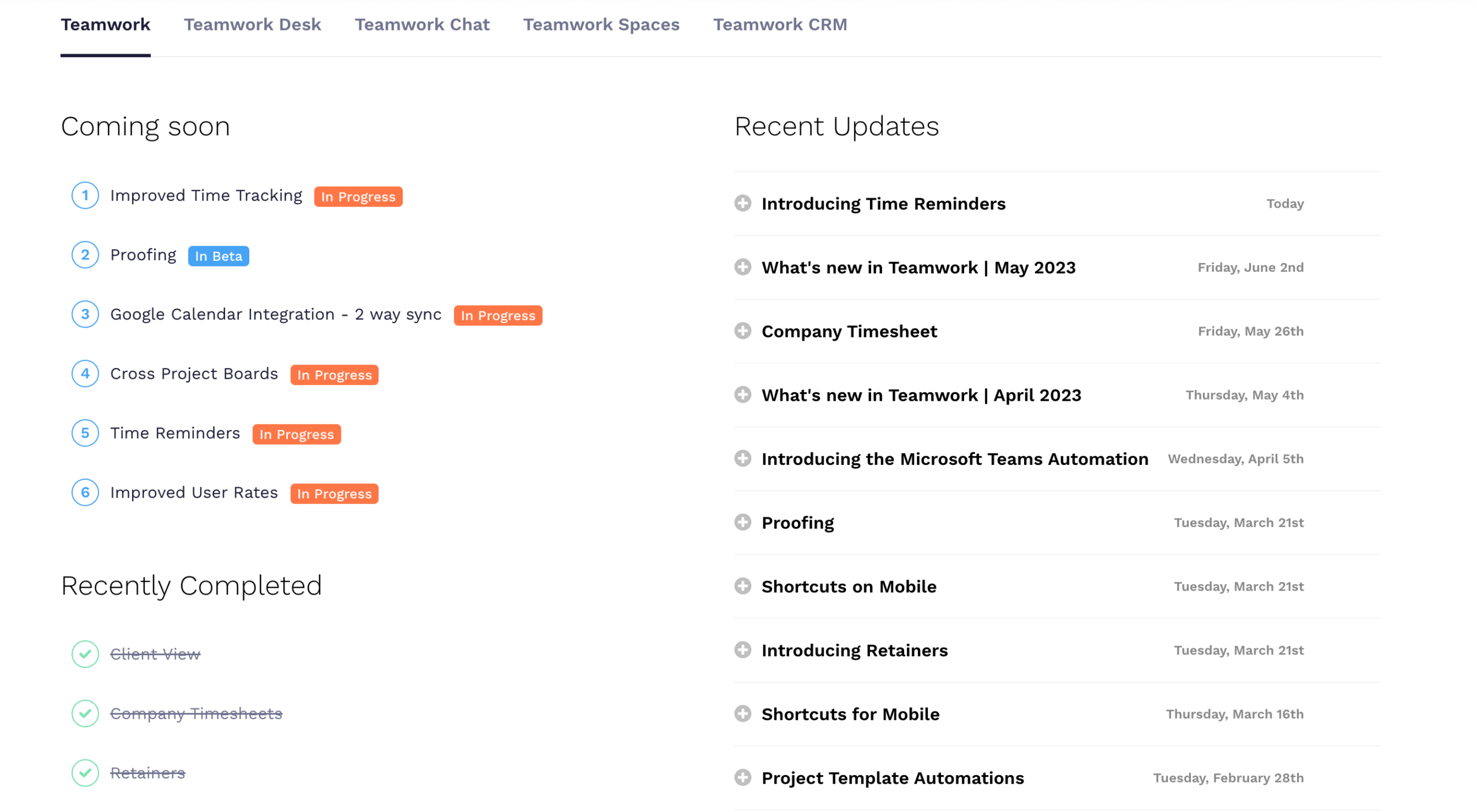
Why Promoting Your SaaS Features Is A Powerful Tactic
There are numerous compelling reasons to showcase and promote specific features, updates, and releases of your SaaS solution. As we’ve discussed, this approach holds significant benefits for SEO, as these pages are highly targeted with keywords that resonate with your target audience’s pain points.
However, the advantages go beyond SEO. By actively promoting these announcements, you demonstrate that your solution is modern, innovative, and continuously evolving. It conveys a sense of progress and responsiveness to customer needs. In fact, leveraging roadmaps can create excitement and provide an opportunity to gather valuable feedback and insights from your existing user base.
Promoting your new features and documenting past releases serves as a catalyst for generating sign-ups and demo requests for your software. By highlighting the enhancements and additions you’ve made, you create a compelling narrative that attracts potential customers and convinces them of the value your SaaS solution provides.
“If you’re launching a new product that enters your company into a new space, start creating content about that space pre-launch. You’ll want to seed this content for SEO purposes and to establish your company as experts in the market. It’ll also give you a chance to see what kind of content resonates prior to the launch, as well as help you surface any issues.”
Target Vertical Landing Pages and Testimonial Videos
Similar to sales prospects searching for certain features and functionality that are most relevant to their business, people often search for software and technology that they know has a track record of adding value in their specific industry.
Moreover, before engaging in a sales cycle, they want to hear first-hand about how your technology offerings have helped companies, business teams, and organizations in similar situations to theirs. Providing both doesn’t just strengthen your brand in the eyes of potential customers, but also helps boost your SEO and makes it easier to find online.
Along with the targeted vertical landing page tactic, including testimonials around that targeted industry is key to building upon your reputation as a brand. You can even get creative with your execution of these testimonial videos. Take Mashore Method as an example. Insivia created a high-level explainer video that sprinkled in some customer experiences throughout the video:
https://youtu.be/SFcubVW2hso?list=TLGGK1BZg1jS9YYwOTA2MjAyMw
This particular CRM is specific to real estate professionals and the video is supported by customers that have experienced working with this company firsthand. This is the best social proof you can utilize to build trust with your target audience.
When including or embedding customer testimonial videos on your website to enhance SEO, remember to do the following:
- Choose a powerful long-tail keyword
- Create a keyword-rich page title
- Select a page URL that aligns with your title
- Add some on-page content
- Choose alt text for page photos
- Attach crosslinks where relevant
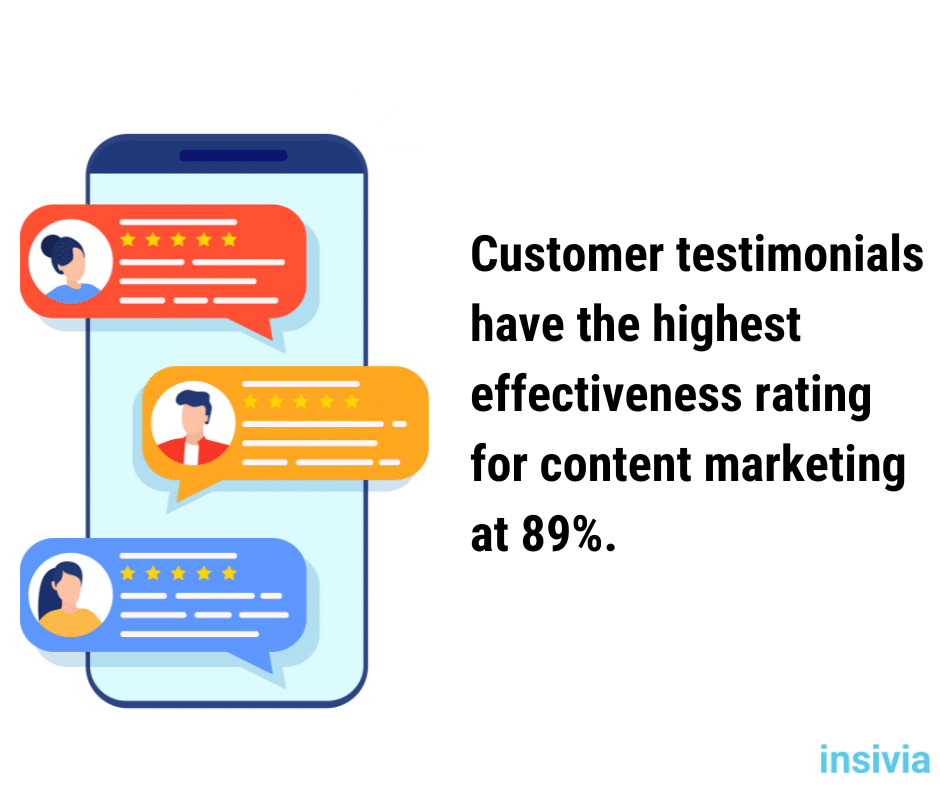
“Updating elements of your page to be keyword focused will help improve SEO on your testimonial pages. By optimizing for search, you have a better chance at bringing organic traffic to your testimonial pages. This, in turn, will allow your current customers to do the talking for your brand.”
Kelsey Taber, Boast Client Testimonials
Documentation and/or API Information for SEO
This is one of the areas of SEO optimization that software companies often ignore, but can actually be a key contributor to improving search rankings. From technical and help documentation to how your APIs interact with other systems, having a carefully planned SEO strategy for these pages is a must for any software company.
For starters, optimize your documentation with your target market’s key phrases and search terms. That being said, you need to avoid “keyword stuffing” altogether. The search terms should exist on your relevant documentation page only a few times (that’s about all that’s necessary).
Another documentation factor that can impact SEO is links. Anchor text, for instance, can positively influence your rankings. These internal links help users and search engines to better crawl through your documentation. Google and other search engines’ algorithms are heavily based on backlinks (i.e. the links pointing back to a particular webpage), making them imperative to SaaS SEO. Therefore, if your documentation is on a different domain than your company’s website, you should consider adding links from your company’s website back to your documentation (and vice-versa) to improve your search engine performance.
Additionally, you should consider adding links to your documentation from your company’s social media sites. Canonical links can further impact SEO. Canonical links specify a preferred URL if duplicate sites are found. For instance, if you have different versions of API documentation available, the canonical link will specify the URL, or the preferred API documentation version, returned in the search results.
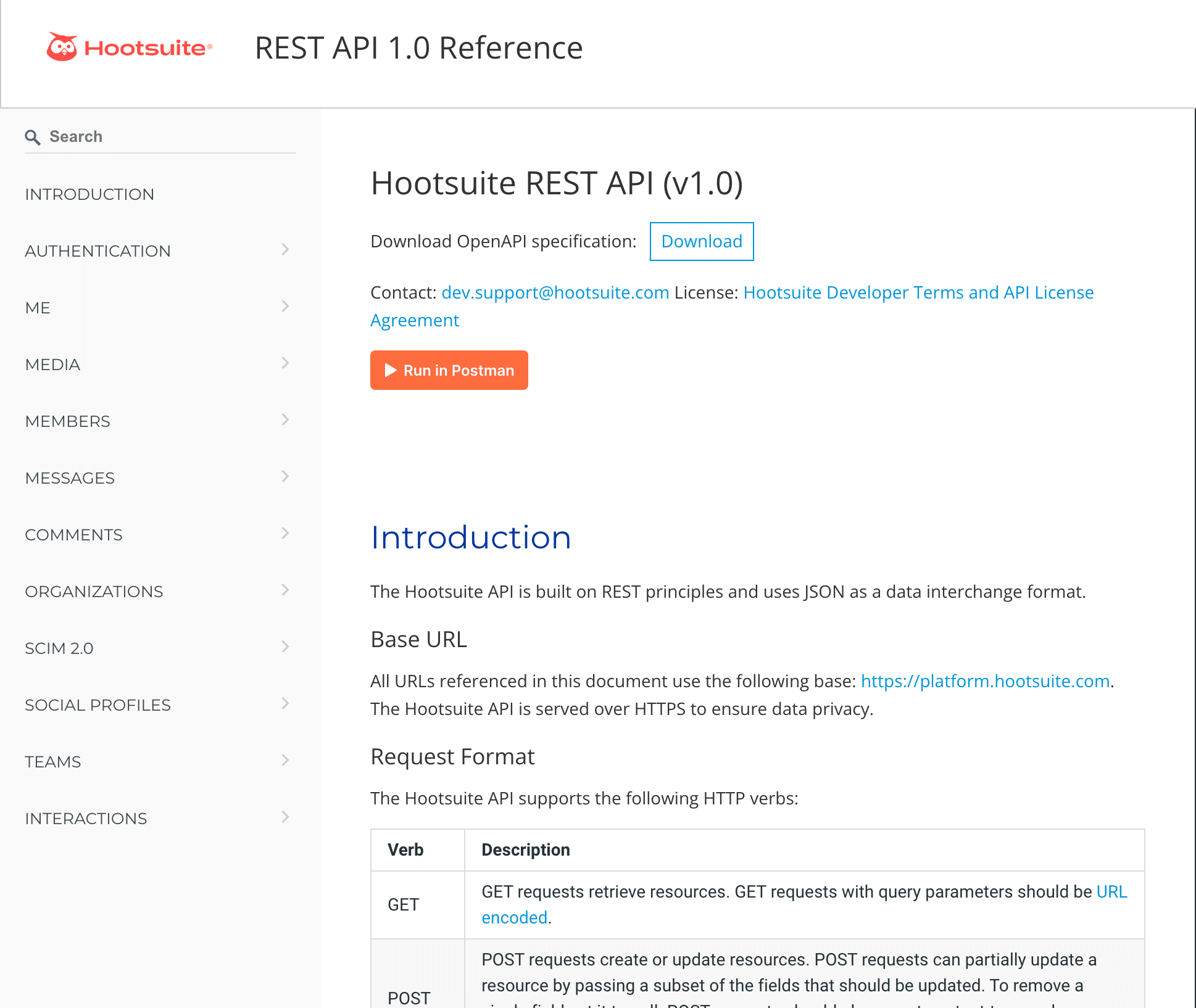
Structure your documentation so that you’ll have the opportunity to include multiple keywords and key phrases throughout (per Hootsuite).
Finally, there are attributes that can hurt your rankings. Utilizing frames or iframes in your documentation will negatively impact search engine results. There are many help authoring tools that utilize frames and iframes in their web-based output, so make sure your documentation isn’t created using one of those. You want to avoid changing a documentation webpage’s URL, its hosting server IP address, or any links. If you make such changes, it could take months for the various search engines to re-index your documentation. Until it is reindexed, the website could have a lower ranking than before these changes took place. Also, changing your URL could cause the backlinks to your site to break, thereby hurting your rankings even more.
That’s not to say you should avoid updating your content. Just make changes to links, URLs, and addresses sparingly, and only when necessary. In fact, if you find that a lot of users are reading about specific topics, these are good areas to routinely focus your attention on to ensure they are properly maintained.
“By utilizing SEO in your technical documentation, the specific topic that each user is searching for will be more easily found. Therefore, even if you are not concerned with how your documentation is ranked by Google, Bing, or whomever, you should still consider the various factors that impact SEO.”
Jennifer Morse, Madcap Software
Target Vertical Industry Trend Reports To Drive Information SEO traffic
To enhance both SEO performance and engagement throughout the sales cycle, it is essential to create valuable and meticulously researched target vertical industry trend reports. These reports should offer unique insights and information that even industry insiders, such as your sales prospects, will find fresh and valuable.
However, it is equally important to ensure that the landing pages and resource sections where these reports reside are structured effectively to optimize keyword visibility and boost search engine rankings.
By following these best practices, you can maximize the impact of your target vertical industry trend reports:
- Valuable and Unique Insights: Craft your trend reports to provide exclusive insights and information that goes beyond what is commonly known in the industry. Aim to present fresh perspectives, emerging trends, and actionable recommendations that can guide your target audience in making informed decisions.
- Well-Written and Engaging Content: Focus on producing high-quality, well-written reports that captivate readers and maintain their interest throughout. Use clear language, concise explanations, and engaging visuals to present complex industry trends in an accessible manner.
- Keyword Optimization: Conduct thorough keyword research to identify the terms and phrases with high search volume that your target audience is likely to search for. Incorporate these keywords strategically into your report titles, headings, subheadings, and throughout the content. This will help search engines recognize the relevance of your reports and improve their visibility in search results.
- Thoughtful Report Placement: Ensure that your trend reports have dedicated landing pages or resource sections on your website. Organize these pages in a user-friendly and SEO-friendly manner, utilizing relevant headings, meta tags, and descriptions. Consider including a summary of each report’s key findings, allowing search engines to easily identify and display the most pertinent information. For example, in the Insivia Resources section of our website we’ve segmented the content toward specific areas of marketing so that certain types of content are easy to locate:
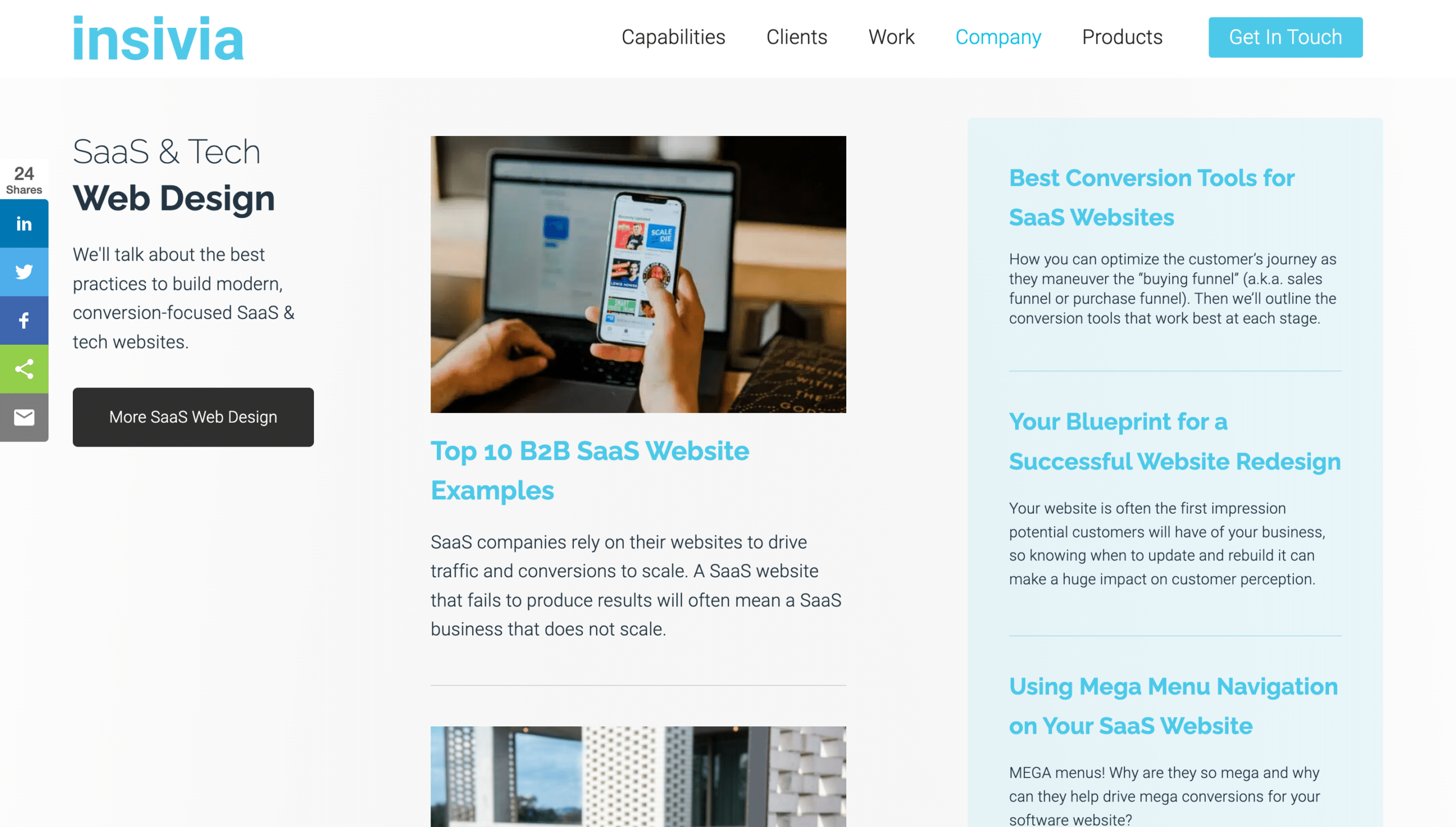
- Internal Linking: Implement internal linking strategies to connect your trend reports with related content on your website. This can include blog posts, product pages, case studies, or other resources that provide additional context or elaboration on the trends discussed in the reports. Internal linking helps search engines understand the relationships between different pages on your site, improving overall SEO performance.
- Promotion and Outreach: Actively promote your target vertical industry trend reports through various channels. Leverage social media platforms, industry forums, email newsletters, and collaborations with industry influencers to generate buzz and drive traffic to your landing pages. This not only enhances SEO visibility but also increases the likelihood of backlinks from reputable sources, further boosting your search rankings.
By focusing on the creation of valuable reports, optimizing keyword usage, and ensuring the proper structuring of landing pages and resource sections, you can leverage target vertical industry trend reports to drive organic traffic, engage your audience, and strengthen your overall SaaS SEO performance.
Vertical industry reports (if optimized correctly), can help your search and SEO rankings in multiple ways. The most important aspect of your industry reports is actually the title. According to Google, search engines consider document titles very heavily in figuring out what the document is actually about and where it should be ranked in search.
A properly created industry vertical report presents readers with challenges relevant to their industry and proves that your organization both understands the problem and how to approach potential solutions. In short, the report is designed to position you as an authoritative expert on certain topics within an industry, which will do wonders for your SEO over time by accomplishing the following:
Address an industry challenge in a way that’s not being addressed.
Offer detailed solutions that nobody else in the marketplace is offering.
Specify a starting point for additional thought leadership content.
Clarify the benefits of the specific solutions you’re proposing.
Deliver upcoming trends for your target industry
By creating industry vertical reports that accomplish these points, you’re giving visitors a reason to click through to specific web and landing pages other than simply engaging in a sales cycle.
If you are offering reports like these as gated content that requires contact information to download, make sure that you put enough information on your landing page so that you can rank well. Often times giving away some of the most powerful stats and quotes, as well as some sample content, can help you rank. Hubspot does a great job providing gated content that still entices visitors to input information to gain access to their reports.
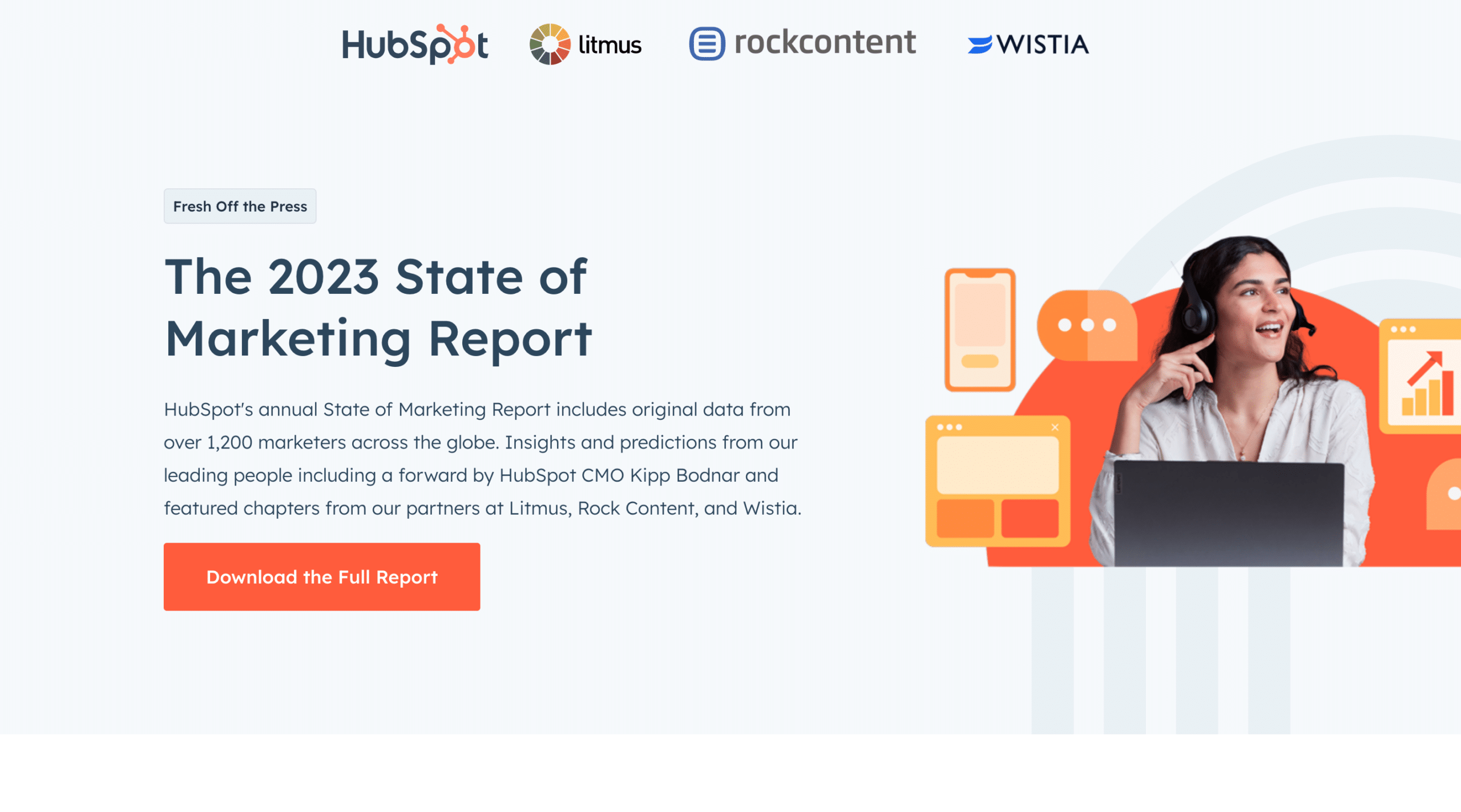
Also, make sure that you include share buttons on the page so that you can build inbound links for SEO.
The additional web traffic you generate from these authoritative reports (and they must be objective, fact-based, and well-researched) will in turn influence search algorithms over time. Moreover, readers might share the links on social media and backlink them on their own blogs, further boosting traffic and SEO ranking.
“The effectiveness of a [report] as an SEO tool activates with the basics. As with any other form of online content, the [report] is a theme to the same kind of analysis search engine algorithms apply to blog posts, advertising copy, and so on.”
Venu Puram, Digital Ready
Integration Tools & Tactics
One of the biggest questions that sales prospects in the software industry have is: How will it integrate with the systems I currently have? And while you’ll want to begin to address this question on your website, as well as provide additional information on integrations in general, it’s also a great opportunity to improve your SEO.
By offering a client website integration tool, along with the proper corresponding documentation, you’ll be able to affect your search engine rankings positively.
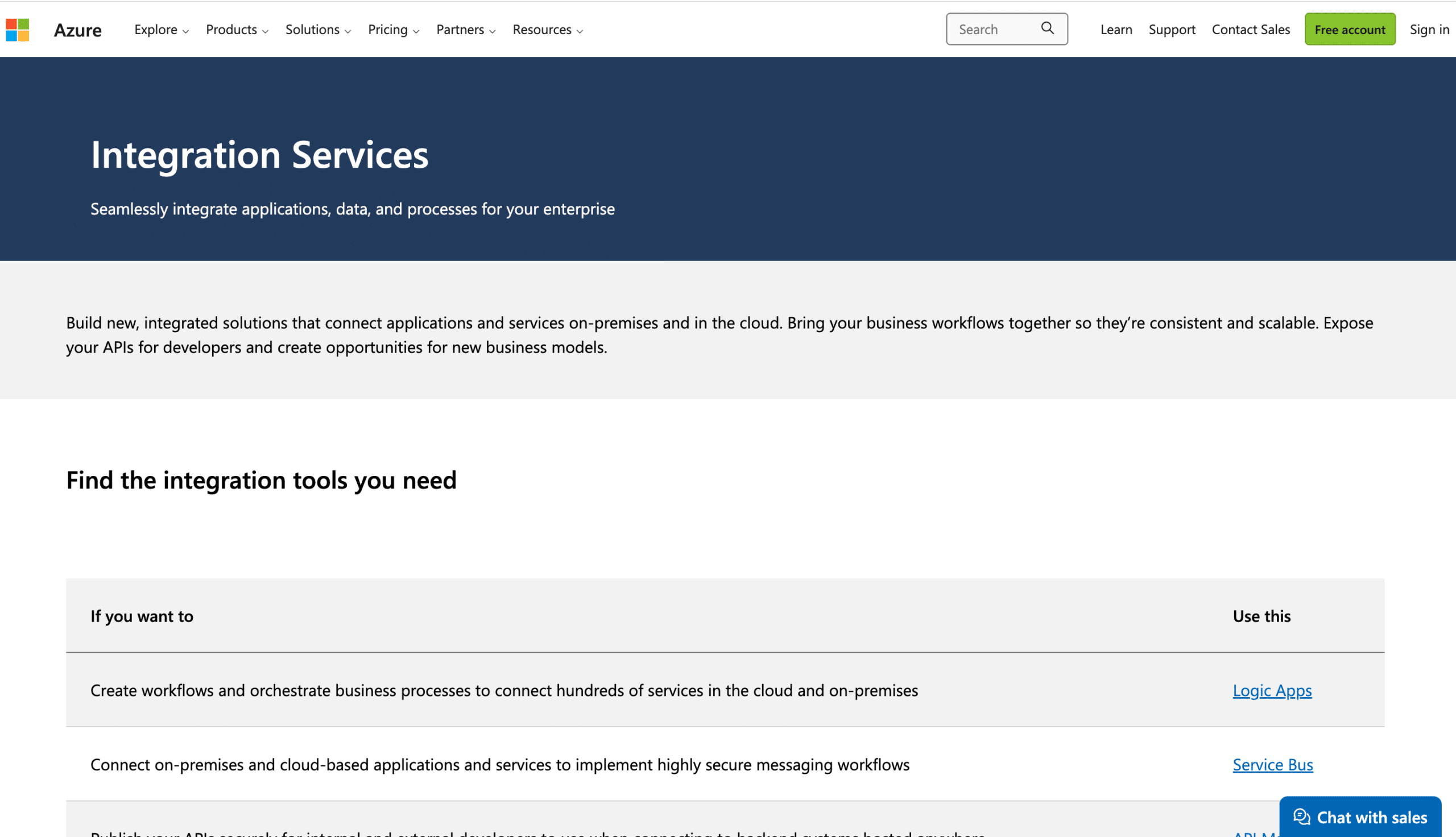
Microsoft’s Azure integration tools web page is a good example of how text can be worked to improve overall site SEO.
The extent to which you’re able to use integration tools for web pages to improve SEO on your website will depend on how many client integrations are necessary for your typical customer. You’ll want to include tools for the most common integrations, as well as key phrases that you’ve determined with your SEO partner that are most relevant to your target audience.
Many software companies also include a marketplace-type webpage that will help integrate and/or connect current systems, products, or services that customers may already be using. If the software you offer is big data analytics, for example, customers may need to connect it with their CRM, project management, or other application at some point.
By providing a webpage with a list of apps that you can easily integrate, as well as tools to do so once they become customers, you’ll have yet another webpage to place key phrases and backlinks (where appropriate).
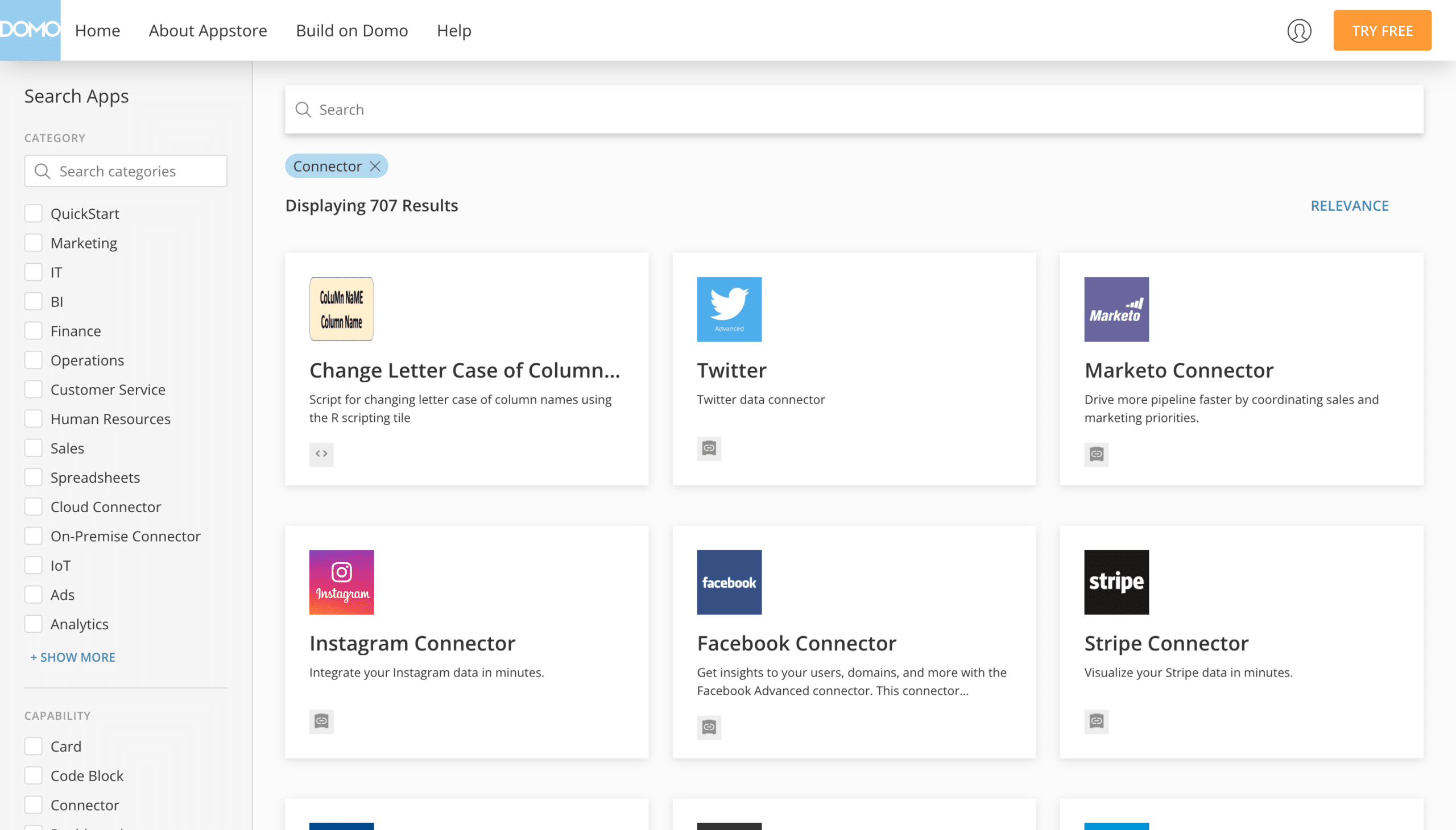
Domo’s connector browsing page allows users to make sure the right integrations are available.
Client integration and web connector tools on your website often go unnoticed (and under-optimized) from an SEO standpoint by many software companies. Make sure to work with an experienced SEO specialist to identify key phrases and place them appropriately throughout all integration web pages.
“Good SEO work only gets better over time. It’s only search engine tricks that need to keep changing when the ranking algorithms change.”
Guest Blogging To Create Backlinks
One of the most tried and true methods that software companies have used to boost their SEO with external content marketing is guest blogging. Whether it’s C-Level leadership, subject matter experts, or marketing personnel, tech companies often blog on other authoritative sites not just to get exposure, but to boost SEO through the use of backlinks.
Guest blogging plays a crucial role in SEO, particularly when it comes to the practice of link building. When your company publishes a guest blog post on another website or publication, it presents an opportunity to strategically include links back to authoritative resources on your own website. These links can be embedded within the text, included in your author bio with a link to your homepage, or directed to other relevant sections on your site.
However, with search algorithms becoming more discerning, it’s essential to keep certain key elements in mind while formulating your guest blogging strategy:
Value-Added Links
Avoid falling into the trap of creating generic guest blog posts solely for the purpose of backlinking. Such posts are often vague, brief, lacking in valuable insights, and demonstrate little expertise. They typically include a few links with keyword-rich anchor text that may not even make sense, while neglecting to provide links to authoritative sources.
To make the most of your guest blogging efforts, ensure that the links you include genuinely offer value to the reader. This approach benefits both SEO and user experience. Each link should be highly relevant to the subject of your post, featuring anchor text that resonates with readers and search engines.
High-Quality Content
Remember that the quality and relevance of the content you link to are just as important as the links themselves. It’s counterproductive to write an exceptional guest blog post and then link to a low-quality article on your website with the intention of boosting its performance. In reality, this approach can have negative consequences, as search engines can discern the lack of value provided and it can harm the ranking and reputation of the site where you’re guest posting.
Both your guest blog post and the posts you link to should represent the highest-quality content you have produced to date. Ensure that the information you provide adds substantial value and enhances the overall reading experience for the audience.
Beyond Links
While backlinks and link building are valuable SEO benefits of guest blogging, they should not be your sole motivation or consideration. If your sole purpose for guest blogging is to obtain links, the quality of your content is likely to suffer.
It’s important to ask yourself whether you would still guest post for a site or publication if they didn’t offer any backlinks. Ideally, the answer should be yes, as you want your brand to be associated with high-value publications. Guest blogging also provides an opportunity to reach new audiences who, if impressed by your insights, may search for your name, bio, and/or the company you work for. Establishing yourself as a thought leader in your field among potential technology buyers can lead to increased referral traffic, searches, and lead generation.
Other Authoritative Sites
After securing a valuable guest blogging opportunity, the temptation to include as many backlinks to your website as possible may arise. However, this approach can raise suspicion among readers and the blog owner, signaling that your primary objective is solely focused on acquiring links. Such a strategy not only tends to be ineffective but also jeopardizes your credibility, potentially preventing future invitations to contribute.
A good rule of thumb is to limit self-referencing links to your own content to no more than two or three times within long-form posts exceeding 1,000 words (even less for shorter posts). Instead, leverage other authoritative sites, relevant facts, statistics, research, and references from within the host blog or other reputable sources. SEO-optimized guest posts typically consist of around 1,100 words with approximately ten overall links.
By adopting a comprehensive approach to guest blogging that prioritizes value-added links, high-quality content, broader objectives beyond links, and judicious use of authoritative sources, you can maximize the SEO benefits and establish a strong reputation within your industry.

“[Guest] content for tier one sites should be as good or better than what you post on your own site. I’m talking mind blowing pillar content that forces the hand of the site owner to hit ‘publish.’ Content that changes minds, sparks conversation, and spurs action.”
Software Directories and SaaS Review Sites for SEO
A basic but smart strategy for software companies is to list their product on as many relevant directories and review sites that exist specifically for software companies.
First, these directories are a great source of direct traffic and awareness. Real buyers utilize them constantly to find and evaluate software platforms. In many circumstances, these sites can be the first place that potential buyers go to look.
Second, these sites are good for SEO because they help provide inbound links as well as help reference-able discovery for people writing articles.
Another great use of these sites is for competitor research. You can learn what your competitors are doing, what features their adding, how their customers rate them, and more.
It is important to have a presence on any site that you can. Below is just a small list of the directories and review sites you can post your profile. One of the important things is to make sure that you fill these profiles out fully to get the advantage and provide prospects with comprehensive information about your services.
G2 Crowd is one of the most popular sources for discovering software solutions. Their interactive evaluation matrix helps visitors get quick insights into the various platforms available.
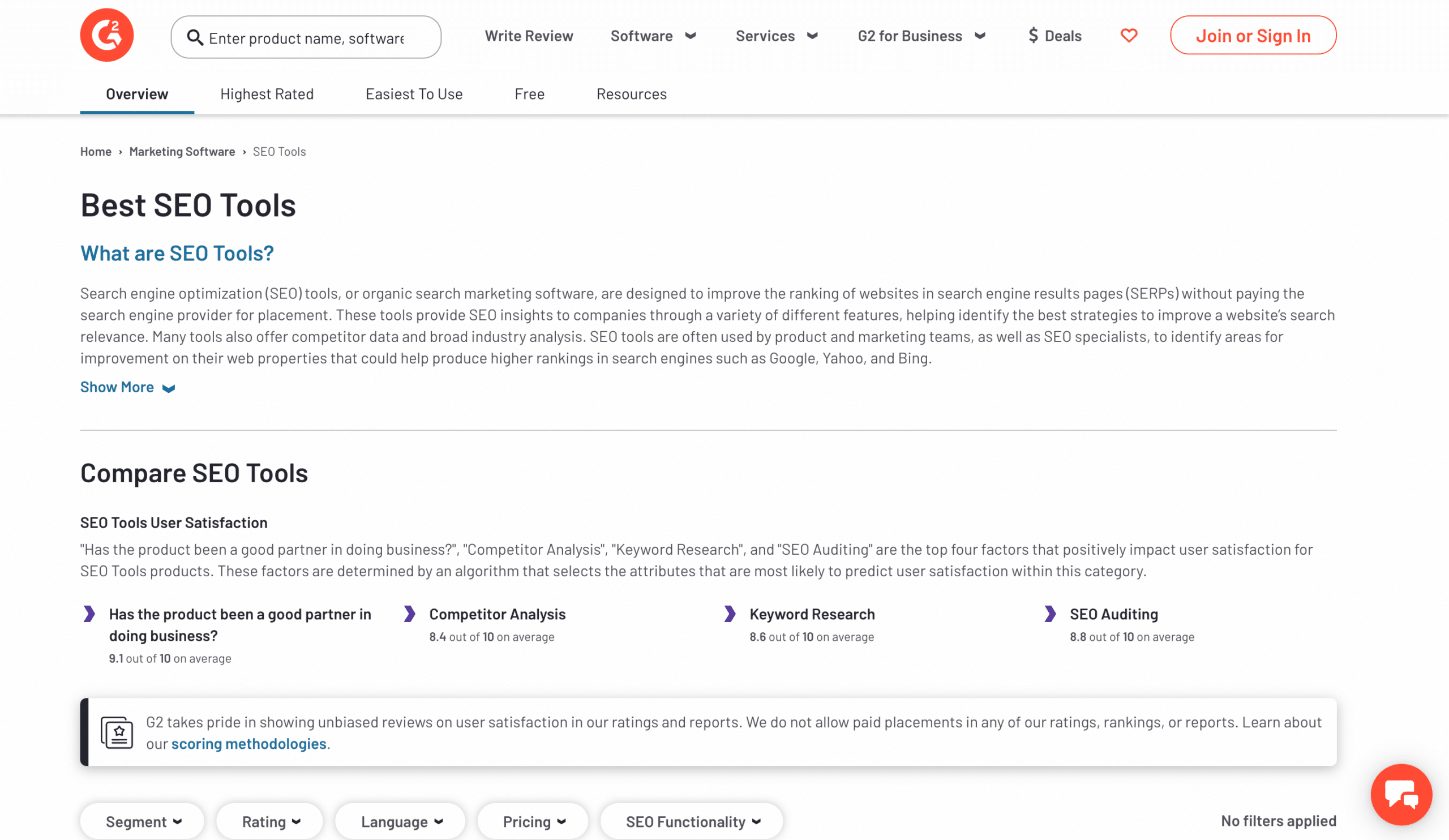
Capterra
With verified reviews, Capterra provides a ton of powerful insight into software and SaaS products. They offer both free and paid listings, so you can get ranked even without an investment.
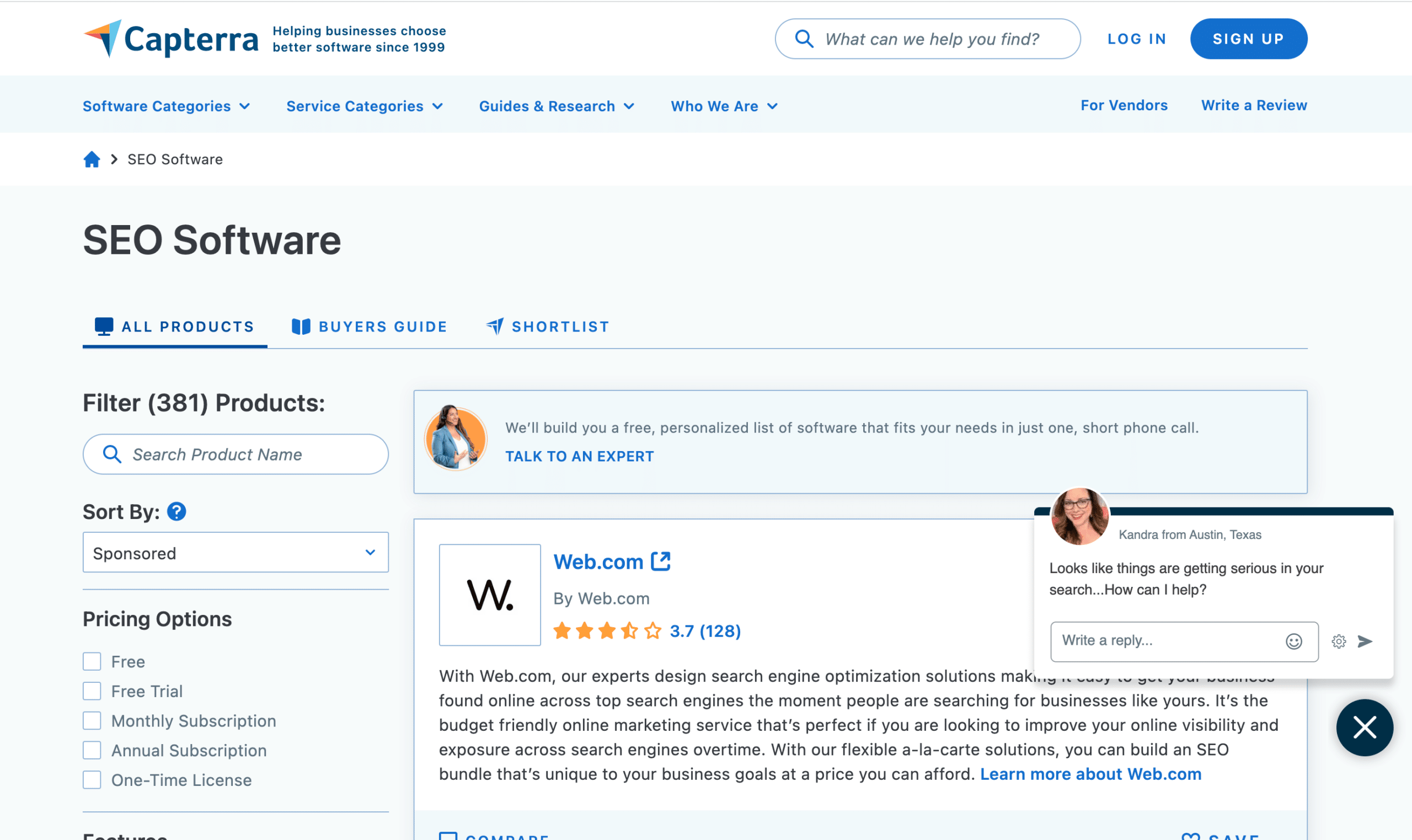
Software Advice
Want someone you can actually call on the phone to ask about software? Software Advice not only has online reviews but they can help walk you through finding the right solution.
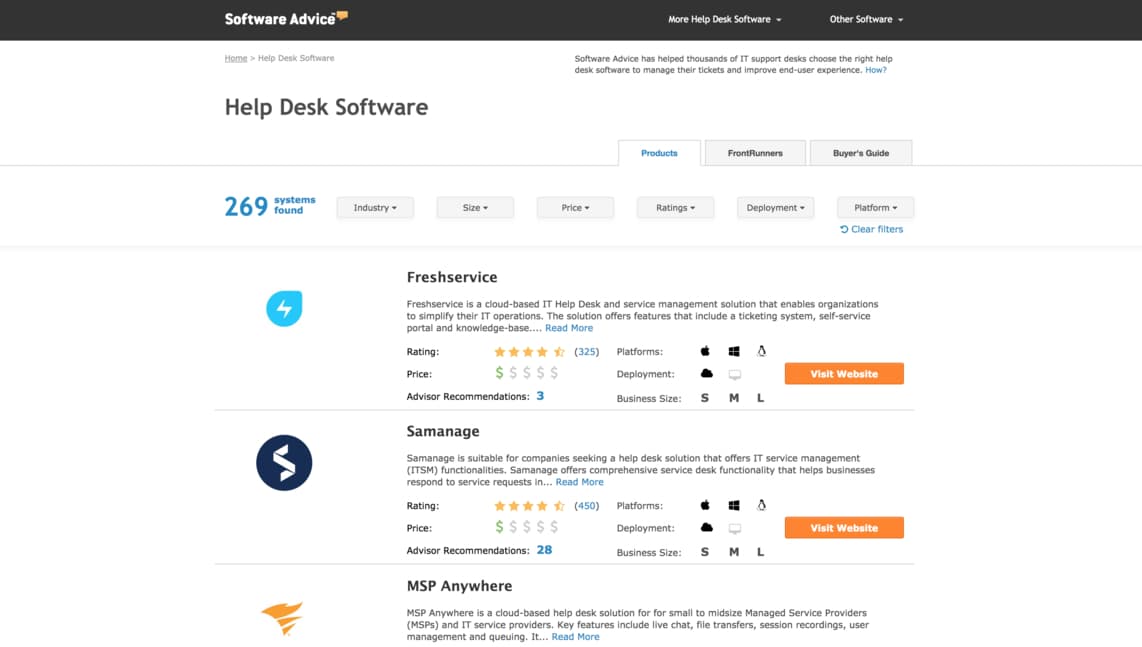
GetApp
GetApp is like many of the other directories out there for software products. One unique feature is their ability to build an integrated stack of products as well as compare products side-by-side.
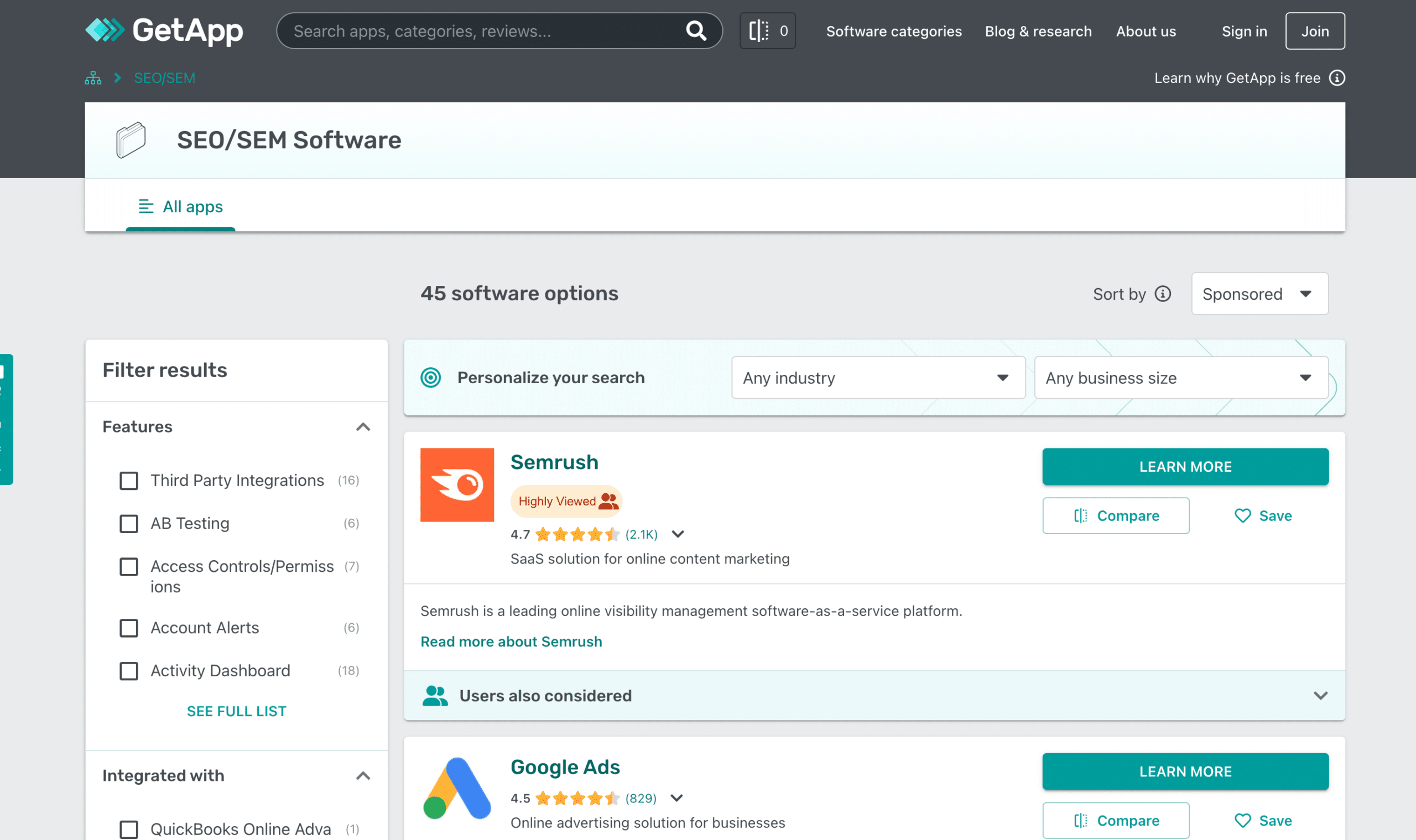
Product Hunt
A well-known site for startups and entrepreneurs, Product Hunt is a unique community of founders, companies, products, and more. It also features events, jobs, and questions to be way more than a directory.
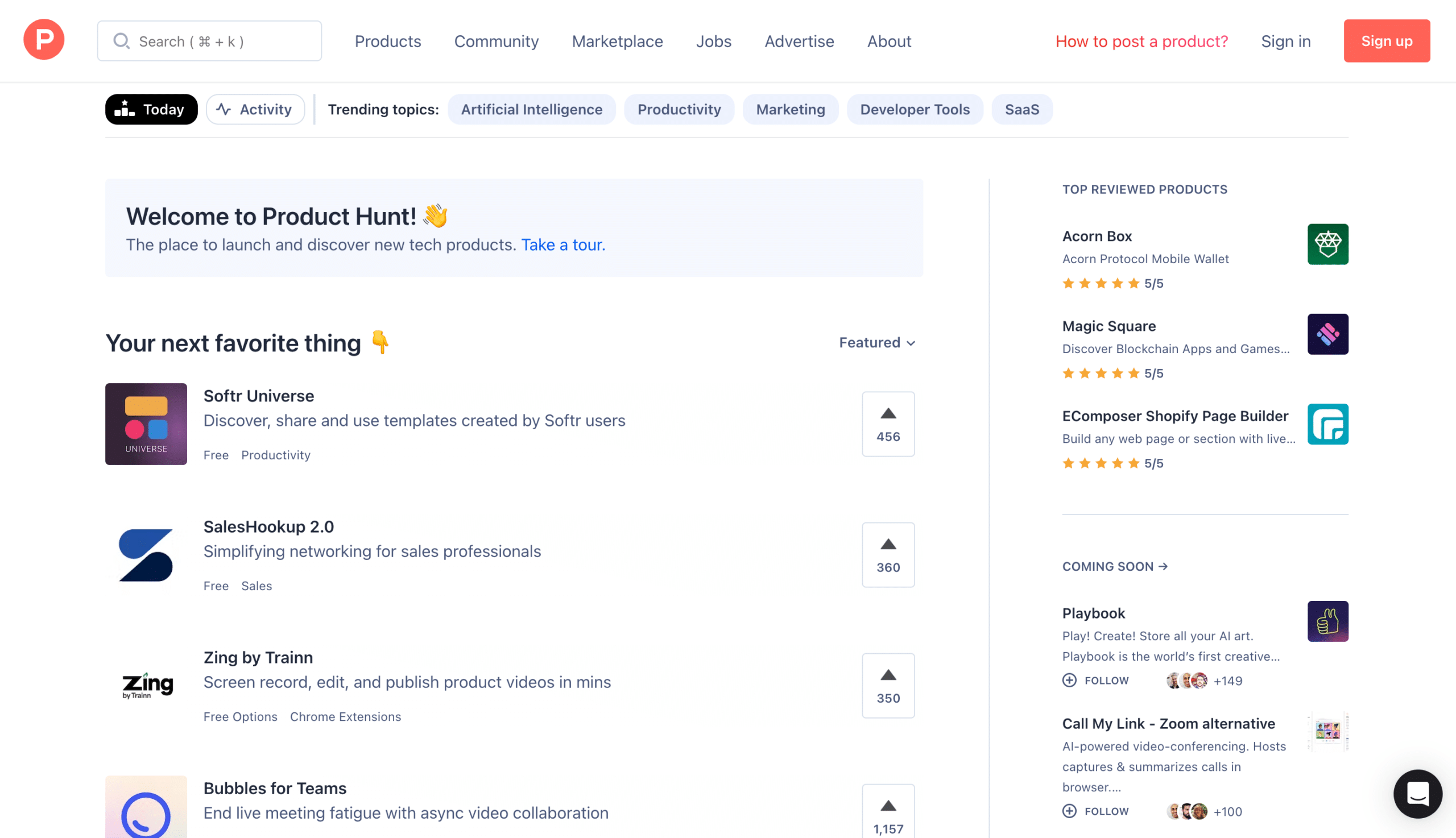
Clutch
Clutch goes way beyond just software and provides reviews on a wide range of companies. After submitting a list of clients, their team will call to interview them attempting to get unbias reviews about your organization.
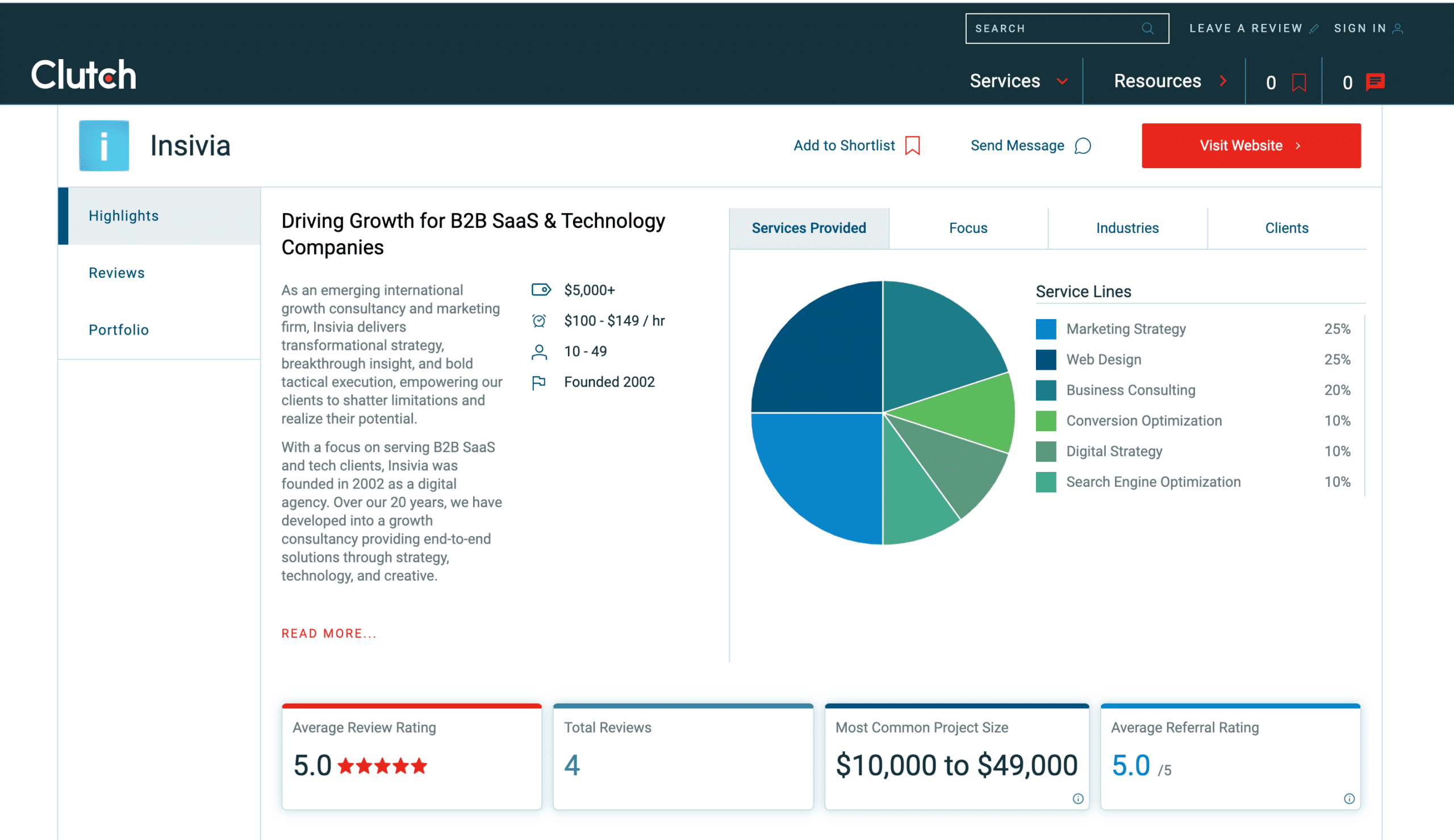
Crunchbase
Crunchbase Pro allows you to track the companies, people, and investors that matter to you. Integrate Crunchbase data with Salesforce, and get API access to pull in data to your own systems.
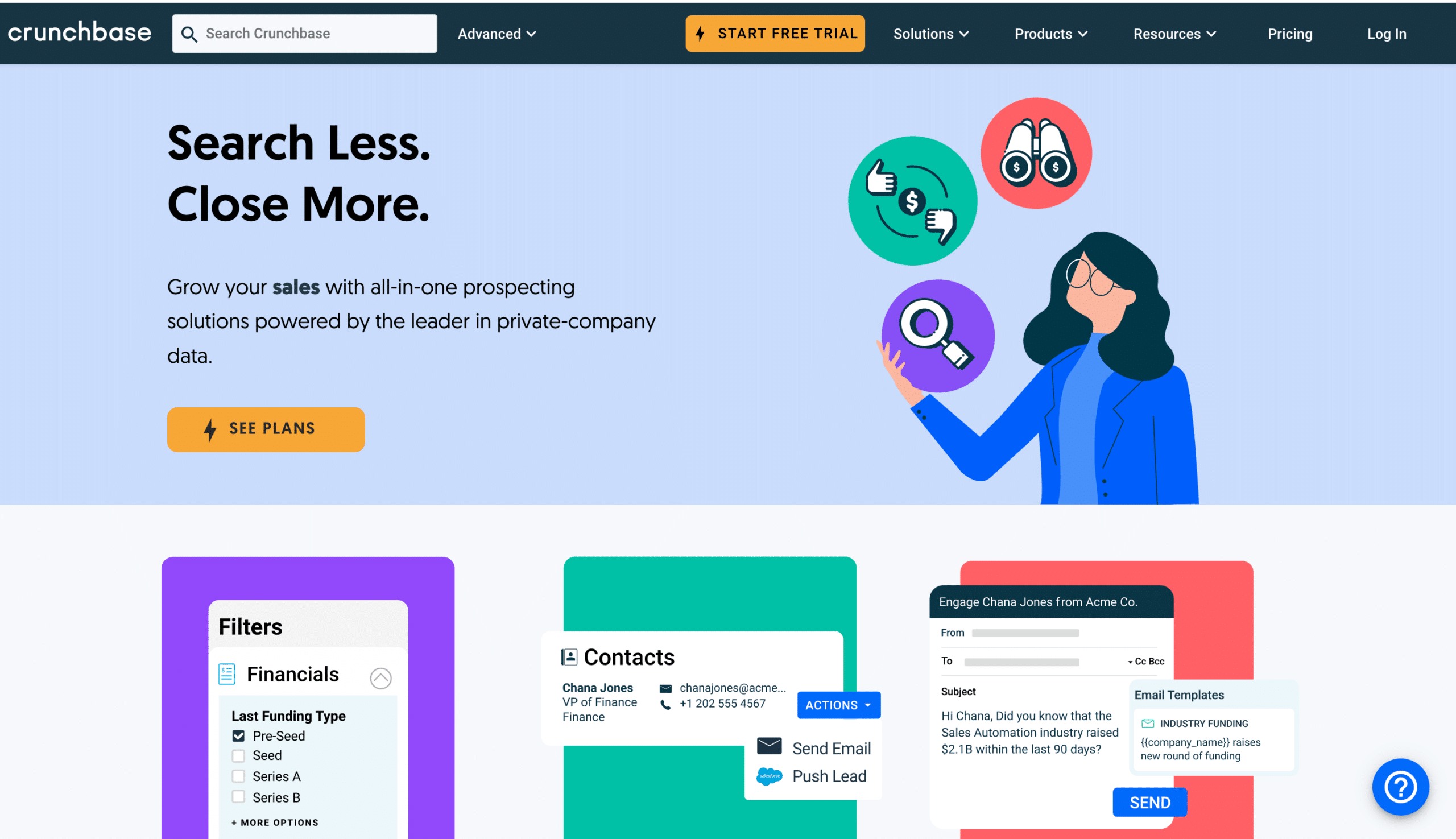
Wellfound (Previously AngelList Talent)
Wellfound is another great community site that goes way beyond software products. It can connect investors with founders as well as discover people through skills and education.
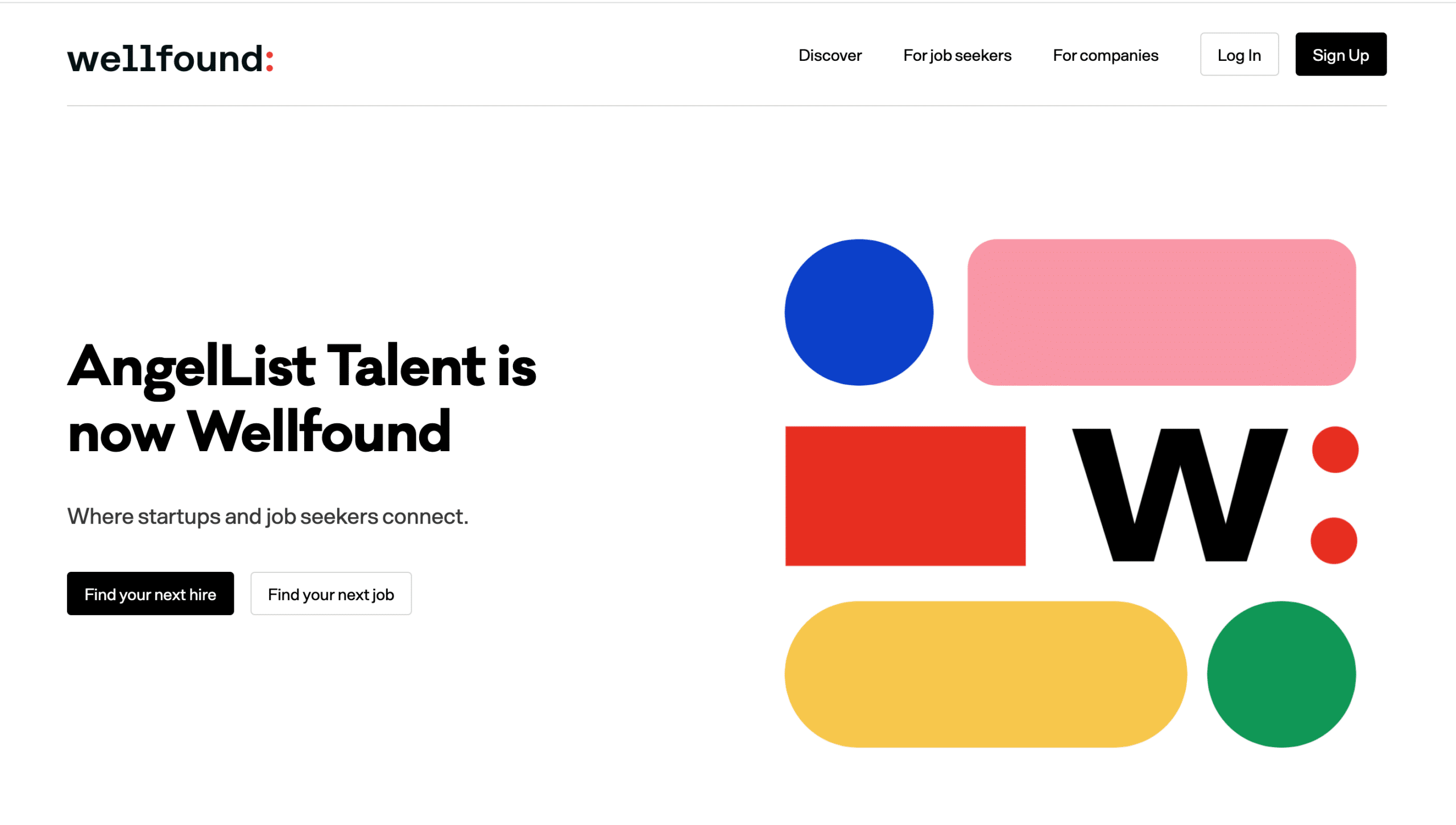
These are just the tip of the iceberg for where you can list your software product. It takes time to fill these profiles out correctly, but it should be a key part of your strategy as a software business.
It is a simple way to drive traffic beyond just ranking higher in search engines.
“We look for vertical directories specific to the industry of our client. Nearly every business or market space has one or more high quality directories that are really worth getting into.”
Leverage SEO Software
When it comes to SEO, it’s important to combine tactical execution with a strategic approach. While manual efforts and expertise play a vital role, it is virtually impossible to achieve optimal results without the support of reliable software platforms. These tools assist in identifying and resolving issues, tracking performance, monitoring competitors, and implementing effective tactics to enhance your SEO strategy.
In the vast landscape of marketing and SEO software, numerous platforms claim to provide exceptional capabilities. However, certain tools have consistently proven their worth and earned our trust. Here are a few examples of SEO software tools that we highly recommend:
SEMrush
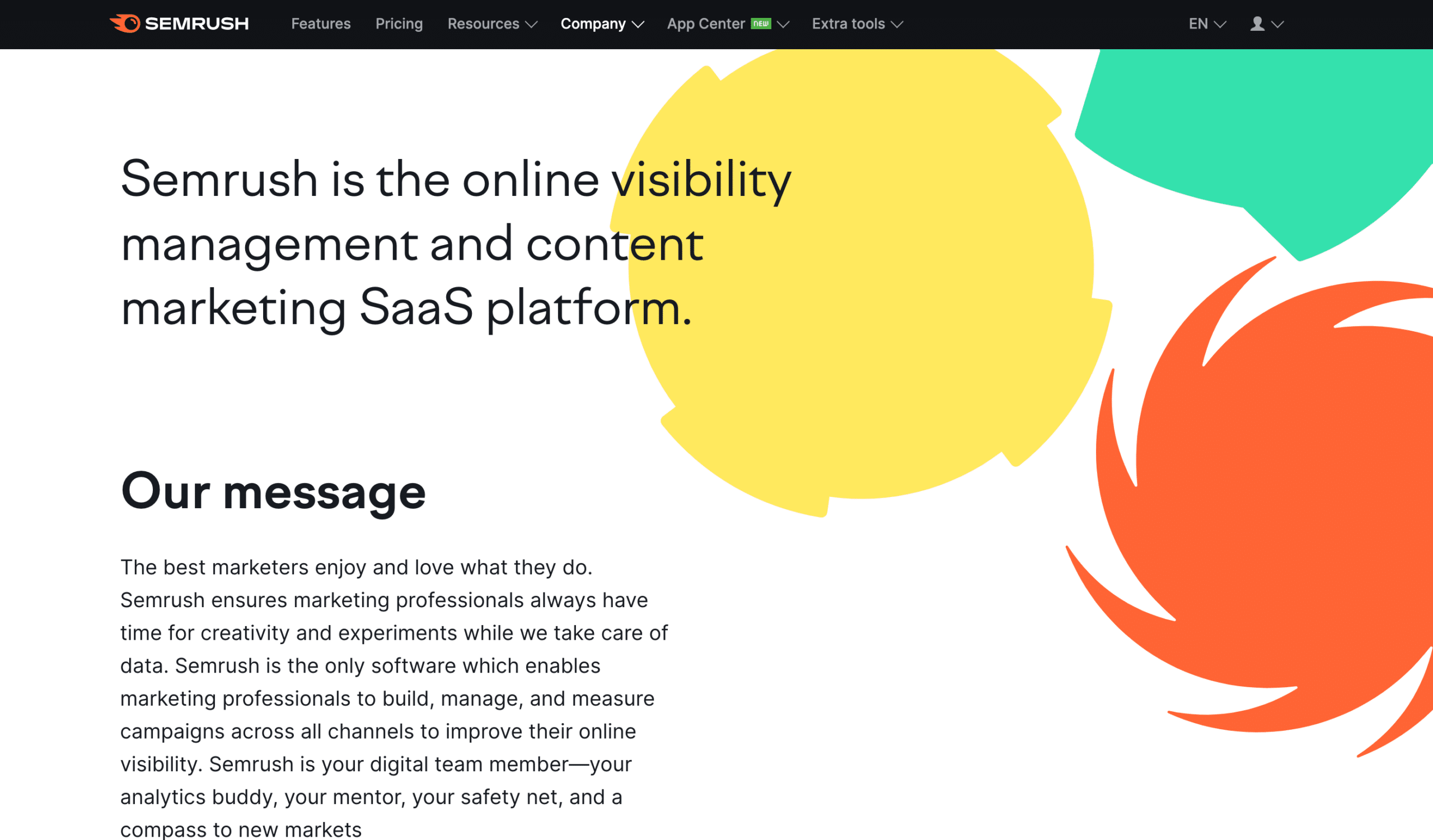
SEMrush is an all-in-one SEO toolkit that offers a comprehensive range of features to support your SEO efforts. From conducting keyword research, analyzing backlinks, and tracking rankings to performing competitive research and auditing your website’s health, SEMrush provides valuable insights and actionable data. Its intuitive interface and robust reporting capabilities make it a go-to tool for professionals across the industry.
Ahrefs
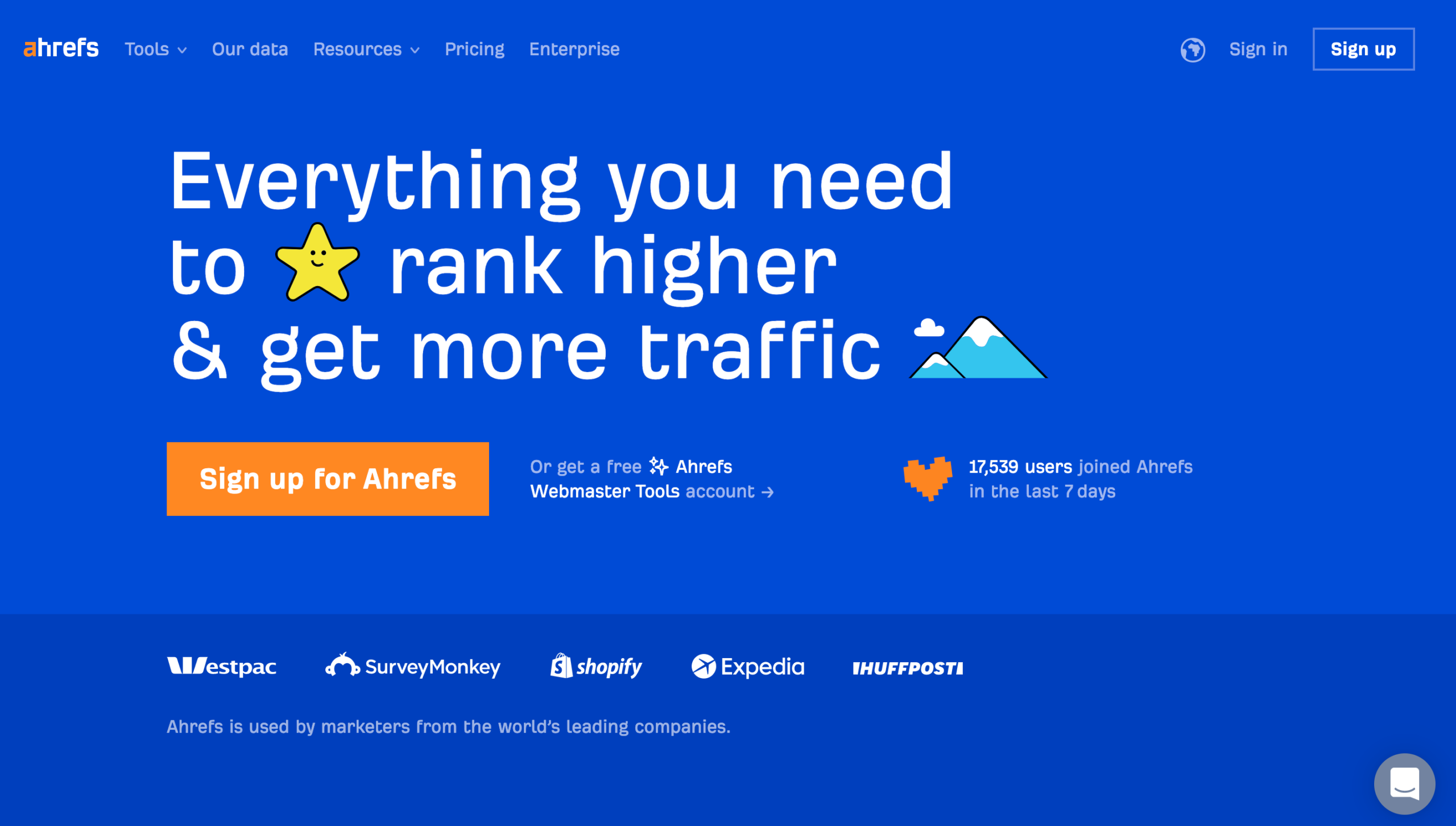
Ahrefs is renowned for its powerful backlink analysis capabilities. This tool allows you to explore the backlink profiles of your website and your competitors, uncover new link-building opportunities, and monitor the impact of your link-building efforts. With Ahrefs, you can also conduct keyword research, track rankings, and analyze content performance, making it an invaluable asset for optimizing your SEO strategy.
Moz
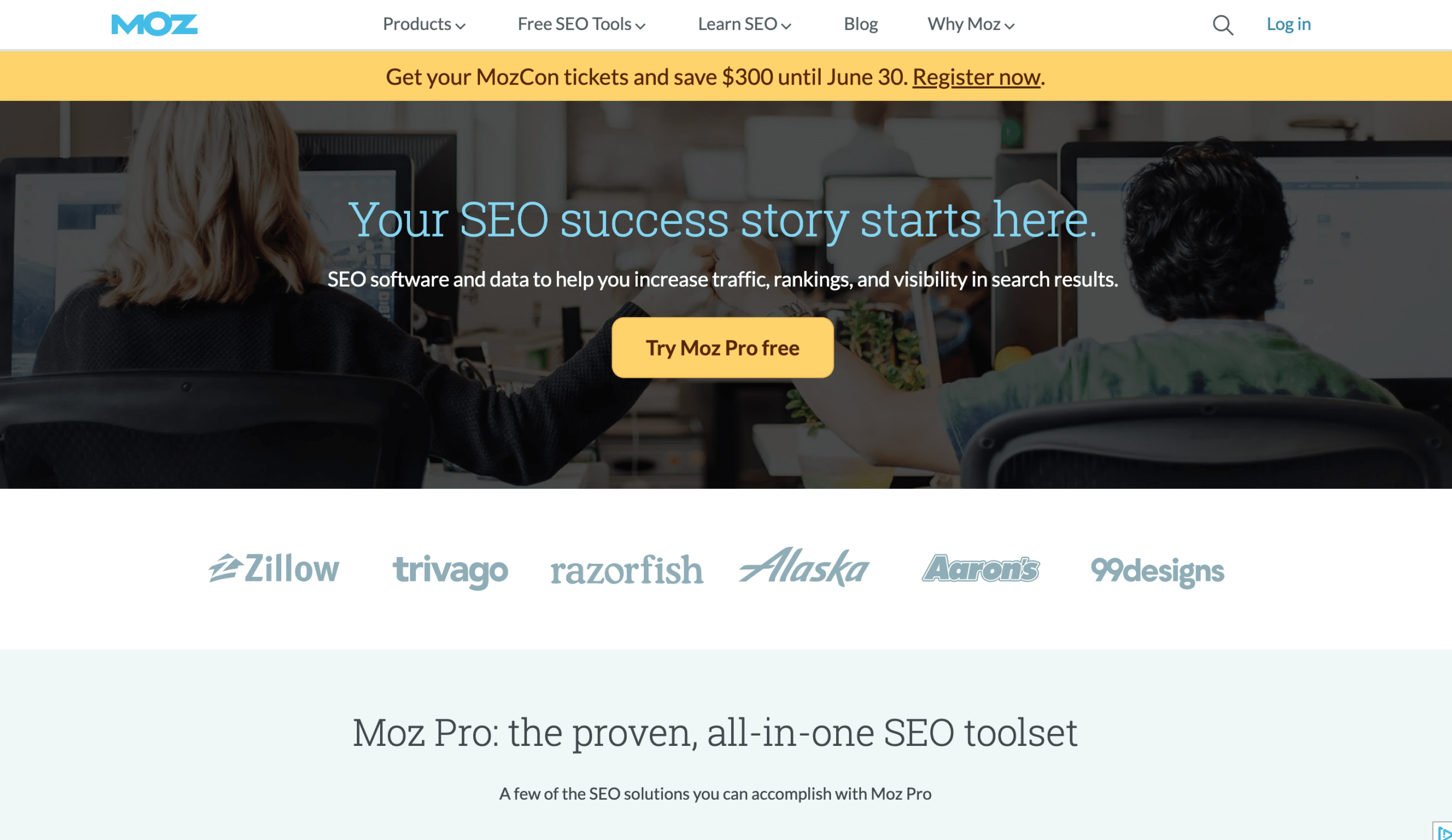
Moz offers a suite of SEO tools designed to enhance your website’s visibility and performance. With features like keyword research, site auditing, rank tracking, and link analysis, Moz provides comprehensive insights to improve your SEO efforts. Moz’s proprietary metric, Domain Authority, is widely recognized and utilized as a measure of a website’s credibility and ranking potential.
Google Analytics
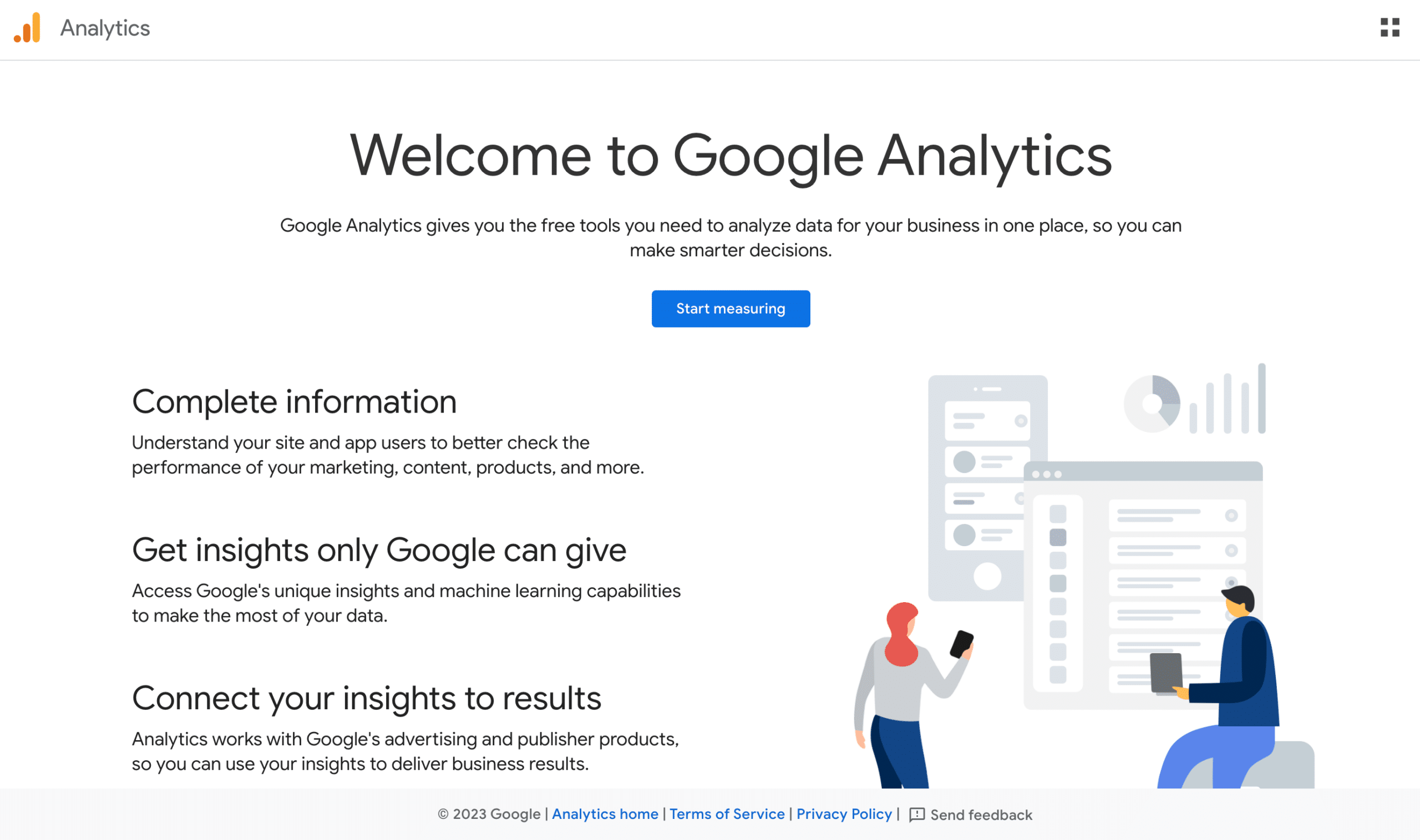
While not specifically an SEO tool, Google Analytics is an essential platform for tracking website performance and user behavior. By analyzing data related to website traffic, user engagement, and conversion rates, you can gain valuable insights to optimize your SEO strategy. Google Analytics allows you to identify high-performing pages, uncover potential issues, and make data-driven decisions to enhance your website’s visibility and user experience.
Screaming Frog
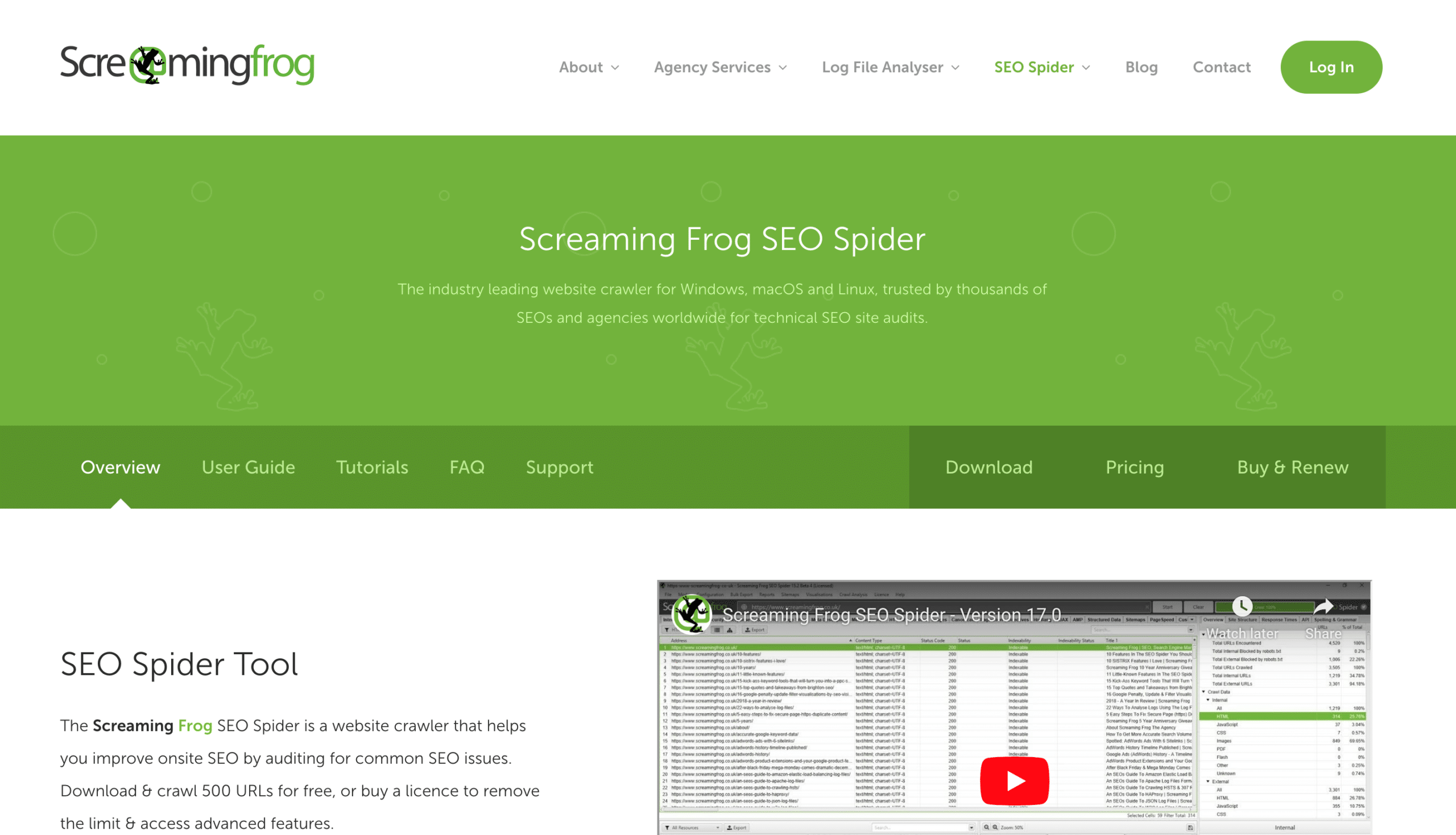
Screaming Frog is a powerful website crawler that provides in-depth insights into your website’s technical SEO aspects. It scans your site for issues like broken links, duplicate content, missing meta tags, and other factors that may impact search engine visibility. With Screaming Frog, you can quickly identify and fix technical SEO issues, ensuring that your website is well-optimized for search engines.
These are just a few examples of the many valuable SEO software tools available in the market. Each tool brings its own unique features and strengths, catering to different aspects of SEO. It’s essential to choose the tools that align with your specific needs and objectives.
By leveraging the capabilities of these software platforms, you can streamline your SEO workflow, gain deeper insights into your website’s performance, and implement effective strategies to improve your organic search traffic.
“These products provide SEO insights to companies through features, such as keyword analysis, backlink tracking, and trend analysis, to identify the best strategies to improve a website’s search relevance. Many tools also offer competitor data and broad industry analysis.”
Key Takeaways
So, whether you’re a B2B SaaS company targeting buyers from the C-Suite within Fortune 500 companies, or a startup consumer app looking to make a name for yourself in the search rankings, you should now be equipped with some additional tips and tricks to optimize your SEO efforts.
- Utilize Landing Pages with Key Phrases: Create targeted landing pages that align with key phrases relevant to your products or services. This approach will improve your SEO rankings and ensure visitors find the most relevant information.
- Leverage Feature Landing Pages: Guide users to the right product pages by creating feature-specific landing pages. This will enhance user experience and increase the chances of converting leads.
- Harness the Power of New Announcements: Generate excitement around new features and functionalities through well-crafted articles and videos. These announcements not only build hype but also establish your authority and credibility in search engine rankings.
- Focus on Target Vertical Landing Pages and Testimonials: Develop landing pages tailored to specific vertical industries and showcase testimonial videos to build trust and credibility with prospects in those industries.
- Optimize Technical and API Documentation: Don’t underestimate the impact of well-optimized technical and API documentation web pages. By ensuring they are properly structured and contain relevant keywords, you can boost your SEO efforts.
- Publish Target Vertical Industry Trend Reports: Position yourself as an industry expert by publishing vertical industry trend reports. These reports demonstrate your deep domain expertise and contribute to building an authoritative site in the eyes of search engines.
- Integrate Client Websites Effectively: Provide informative and useful client website integration tools that incorporate relevant target keywords and phrases. This approach not only serves a technical purpose but also supports your SEO strategy.
- Embrace High-Quality Guest Blogging: Guest blogging is still relevant, but quality is paramount for content strategies. Ensure your guest blog posts offer valuable insights and align with reputable publications. As the old adage goes, “Content is King.”
- Leverage SEO Software: Utilize keyword research tools that give you insight into your current SEO performance, relevant opportunities to rank higher on Google, and keyword suggestions that will help you grow within your industry.
By implementing these strategies and adapting them to your specific SaaS business, you can maximize your SEO potential, improve rankings, and ultimately drive valuable organic search traffic to your website. Keep refining your approach, staying up to date with industry trends, and continuously monitoring and optimizing your SaaS SEO efforts to achieve long-term success.
Written by: Tony Zayas, Chief Revenue Officer
In my role as Chief Revenue Officer at Insivia, I help SaaS and technology companies break through growth ceilings by aligning their marketing, sales, and positioning around one central truth: buyers drive everything.
I lead our go-to-market strategy and revenue operations, working with founders and teams to sharpen their message, accelerate demand, and remove friction across the entire buyer journey.
With years of experience collaborating with fast-growth companies, I focus on turning deep buyer understanding into predictable, scalable revenue—because real growth happens when every motion reflects what the buyer actually needs, expects, and believes.
